Mountain Laurel Care: How To Plant & Grow Kalmia latifolia
Mountain laurel (Kalmia latifolia) is a beautiful flowering evergreen shrub that thrives in the shade and can be grown in many parts of the country. It's easy to care for, and produces lovely pink or white flowers in the spring. If you're interested in growing Mountain Laurel, here is everything you need to know including planting, pruning, fertilizing and caring for it.
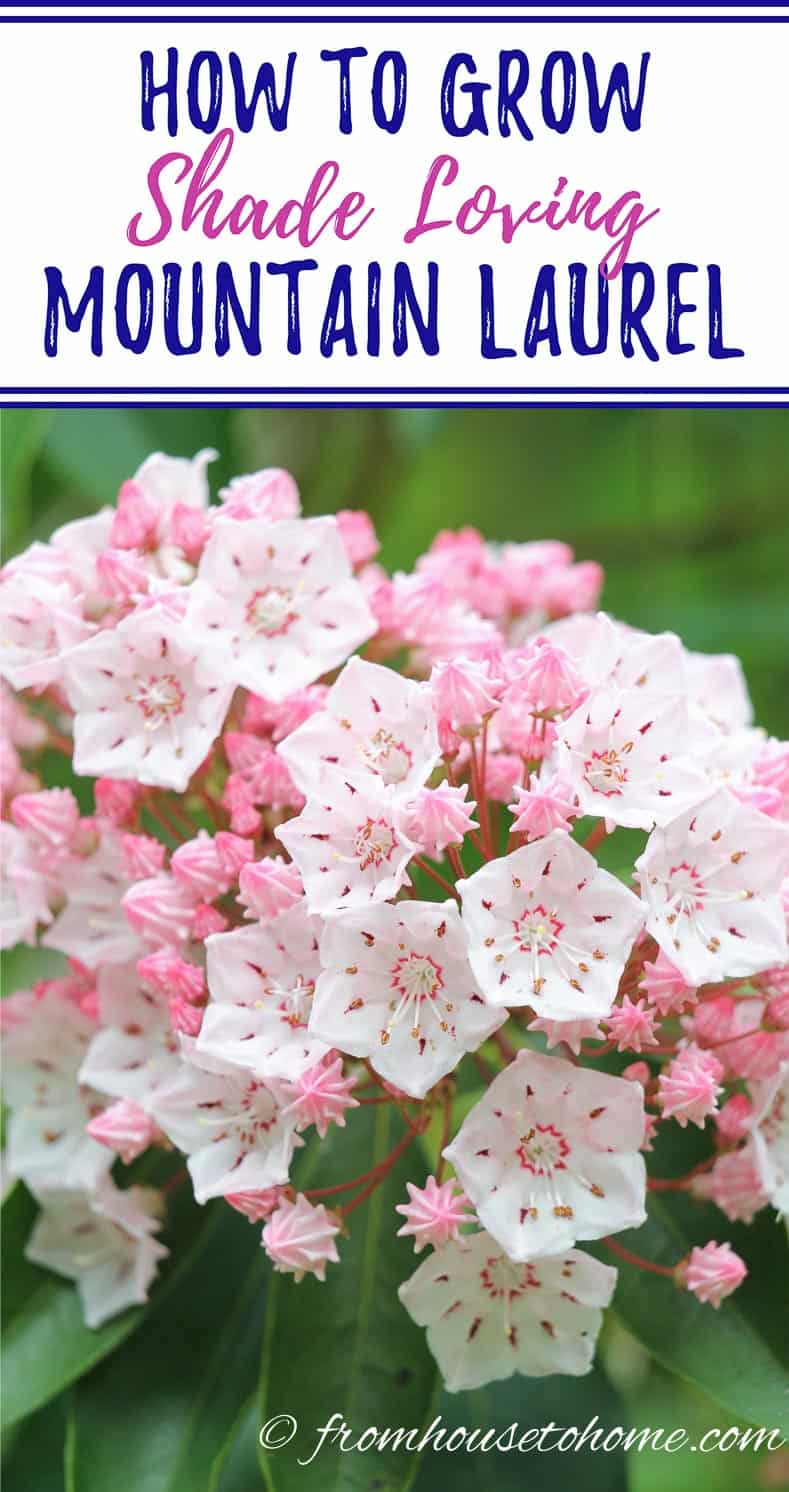
Zone: 4 to 9
Exposure: Partial shade to full shade
Height: 3′ to 30′ (depending on the variety)
Width: 3′ to 30′ (depending on the variety)
Bloom time: late spring to early summer
Flower color: white, pink or red
What does Mountain Laurel look like?
Mountain Laurel (Kalmia latifolia) is a broadleaf evergreen shrub that is a native woodland plant of eastern North America.
It's a well-behaved bush with dark green leaves that grows slowly in a mounded form and doesn't spread or wildly self seed. Which makes it a great non-invasive addition to your shade garden.
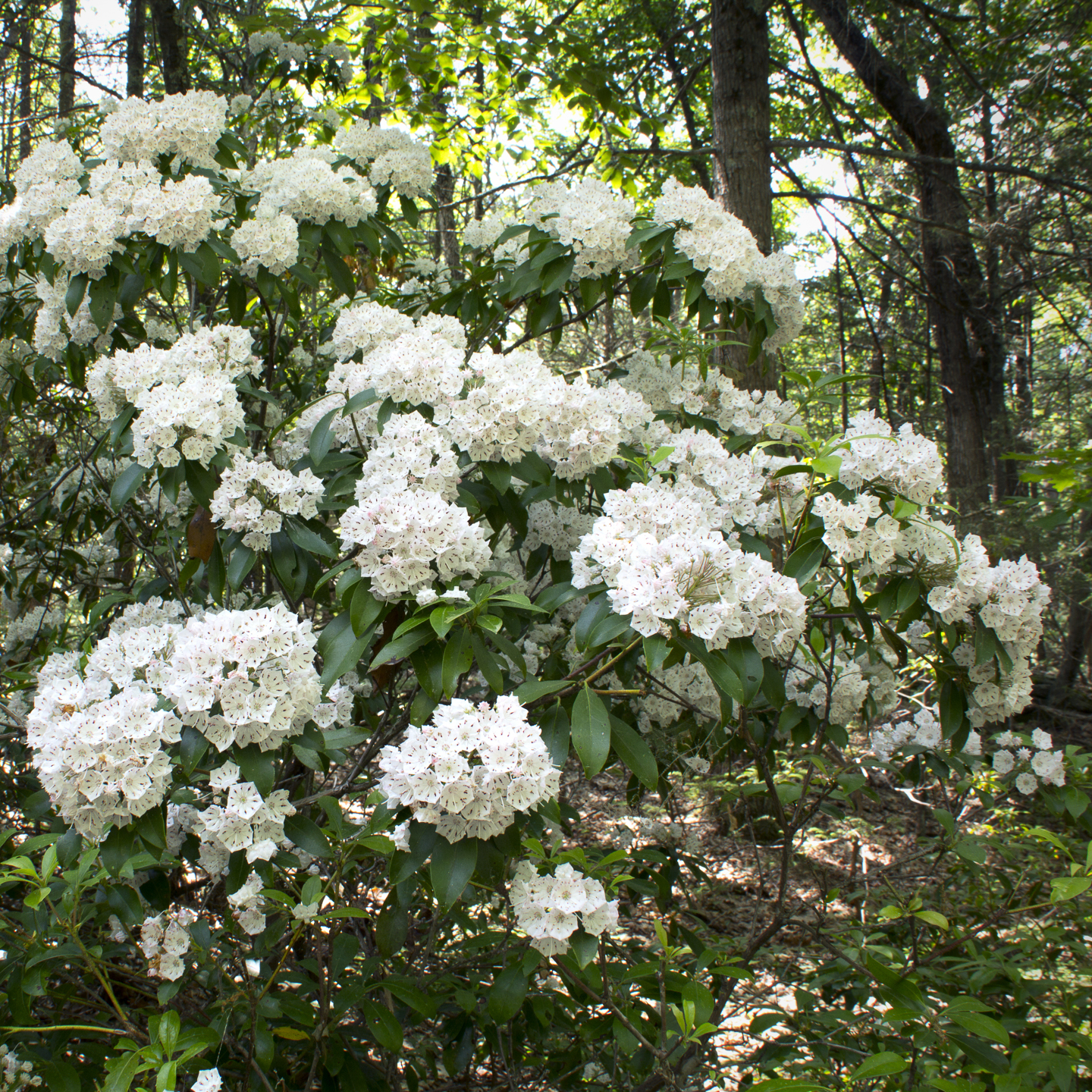
Clusters of showy red, white or pink flowers appear from white or pink buds in late spring to early summer. And they are so pretty that this plant has been selected as the state flower of two states – Connecticut and Pennsylvania.
Note: If you are looking for the Mountain Laurel with purple flowers that look something like Wisteria and is often grown in a small tree form, that's a totally different species commonly called Texas Mountain Laurel (Sophora secundiflora). You can find out more about it HERE.
Since the foliage stays green, the plant adds structure to the garden even after it has finished blooming.
This makes it perfect for informal hedges, foundation plantings, the back of perennial beds or mass plantings in woodland gardens.
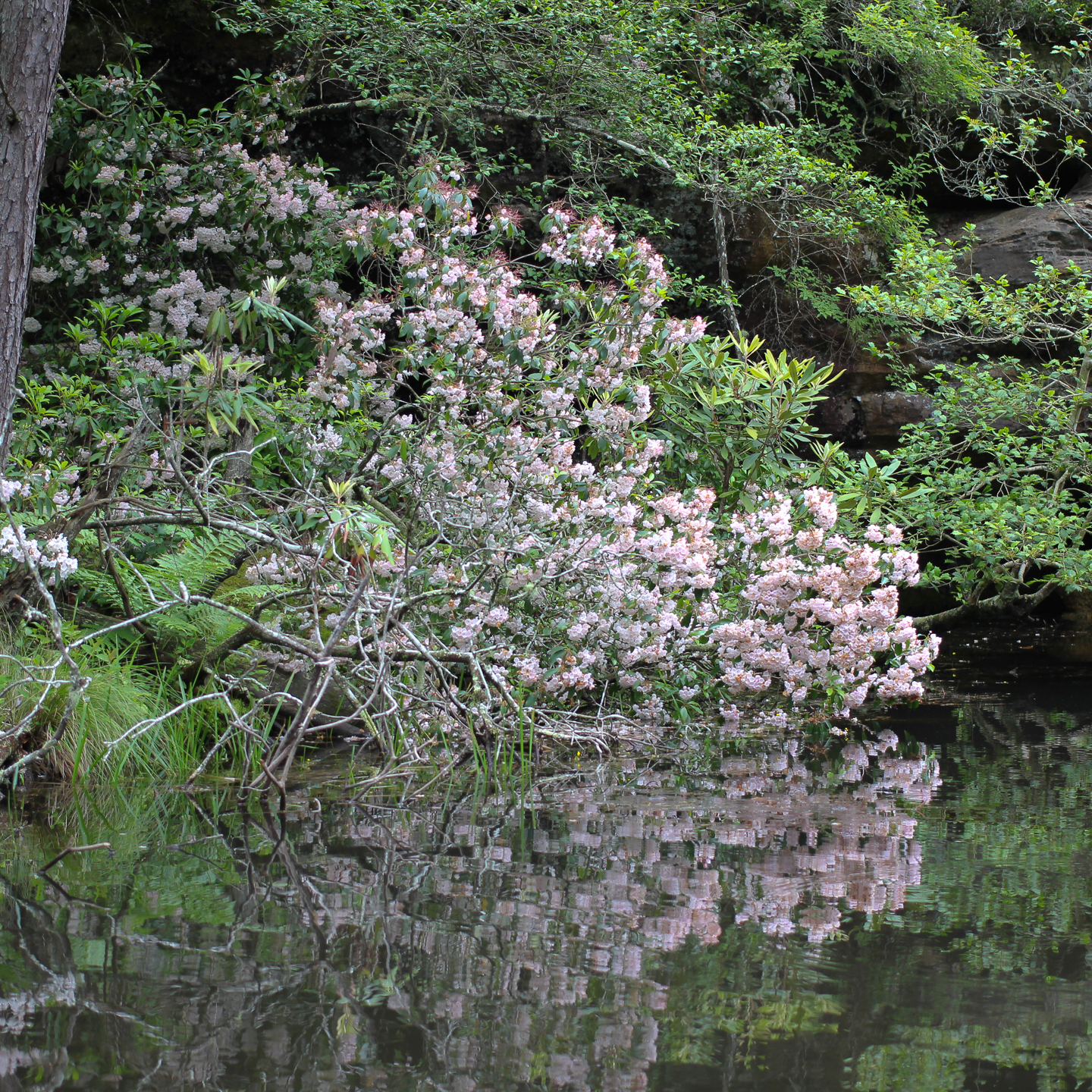
In the wild, mountain laurel is actually quite a large bush. It can grow up to 30 feet high and wide.
However, many of the cultivated varieties are much smaller, so check the label when you are buying.
Mountain Laurel vs. Rhododendrons
Kalmia latifolia is a member of the Ericaceae plant family which also contains Rhododendrons and Azaleas.
So it has many of the same characteristics as its close cousins, including leathery, evergreen leaves, a love of acidic soil and the ability to grow (and bloom) in the shade.
In fact, they are so similar that I have heard of nurseries selling plants labelled as the more expensive Kalmia latifolia when they were actually Rhododendrons. (So be sure to buy them from a reputable source).
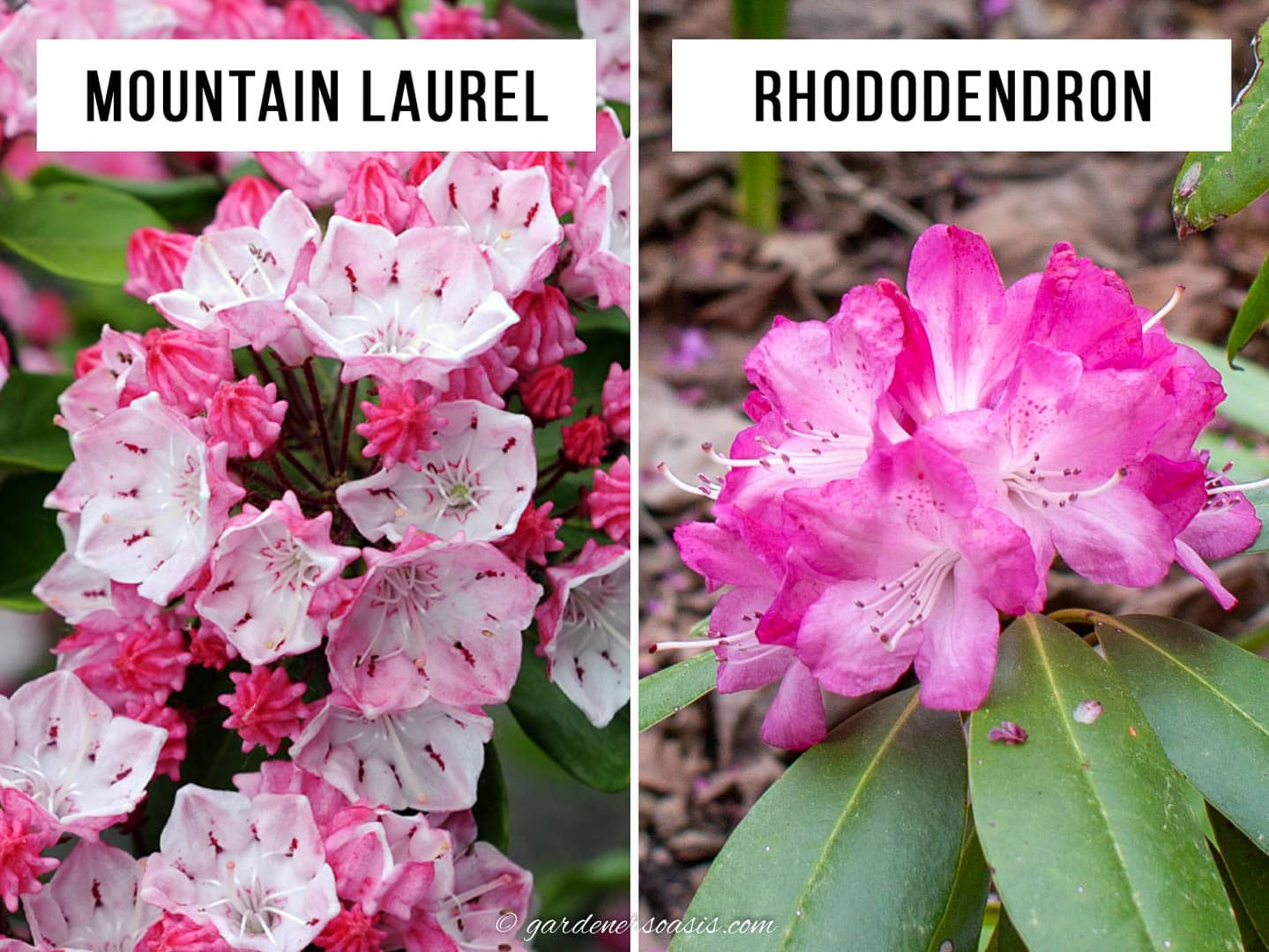
The biggest difference between Mountain Laurels and Rhododendrons is the shape of the flowers:
- Mountain Laurel has bowl-shaped flowers with a wider base and petals that curl in.
- Rhododendrons have bell-shaped blooms with a narrower base and petals that curl out.
You may also be able to tell the difference by the size of the leaves. Rhododendron leaves tend to be longer and wider than Mountain Laurel leaves. But this can be hard to judge unless you have the two plants quite close to each other, and they're both around the same size.
Or if you happen to be looking at the bush in the winter when temperatures are less than 25℉ (-4℃), the Rhododendron leaves will curl closed while Mountain Laurel leaves will not.
Where to plant
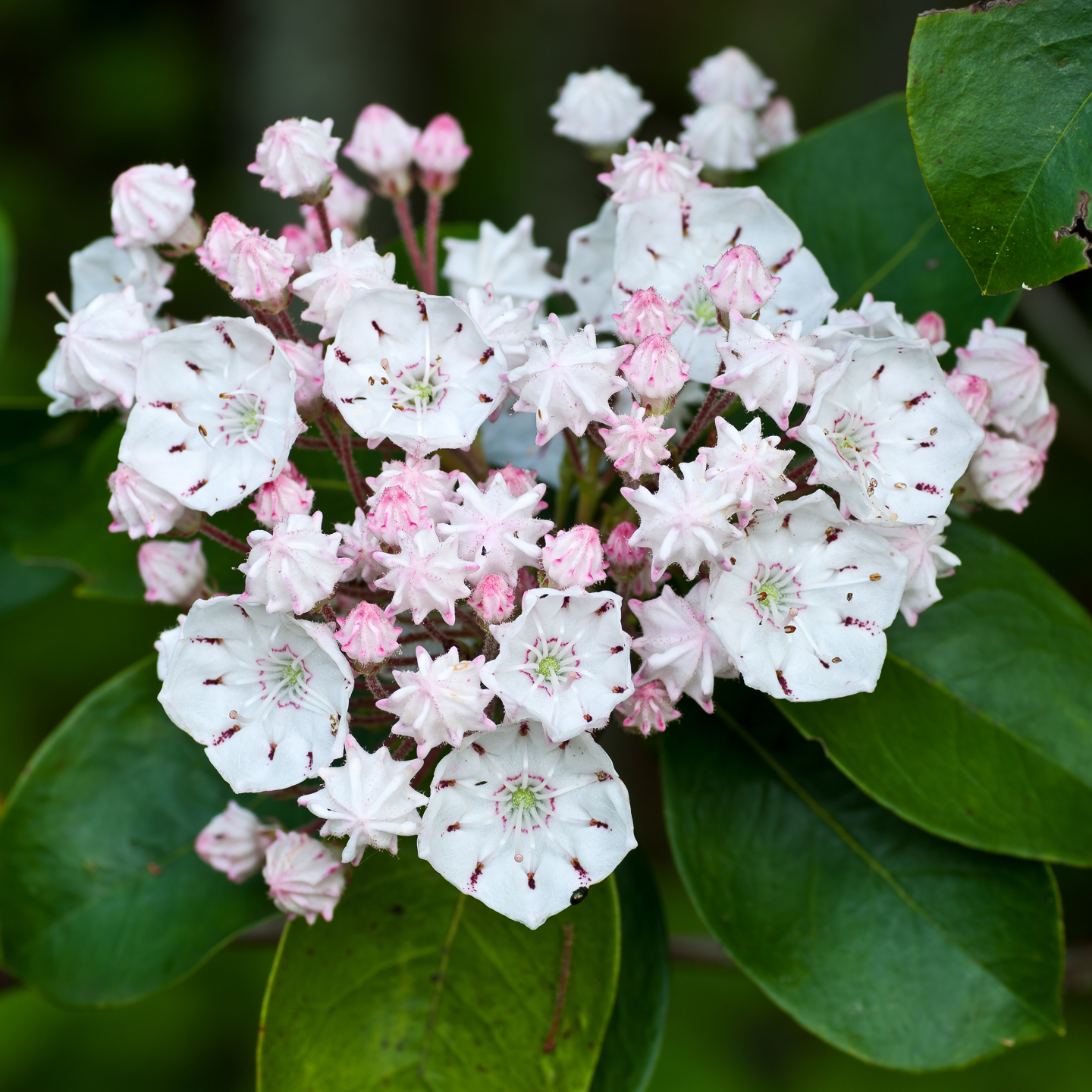
This shrub will grow in a range of light from full sun to full shade, but dappled or part shade is best if you want lots of flowers. So you'll want to find a location that doesn't get too much sun.
It likes to grow in moist but well draining soil which means finding a spot that isn't too wet (but also isn't too dry).
Kalmia latifolia needs acidic soil to thrive.
So if your soil pH is too high (not acidic enough), you'll need to add soil acidifiers (such as peat moss) to decrease it. And this will have to be repeated every year in the spring since nature has a way of reverting back to its original state.
If you're not sure how acidic your soil is, learn more about soil pH and how to test it HERE.
Mountain Laurel doesn't like clay soil, so if that's what you have consider planting your Mountain Laurel in a raised bed. Or add a mound of top soil over your existing soil to help improve the drainage.
And finally, make sure to plant it where it will have room to grow.
How to plant Kalmia latifolia
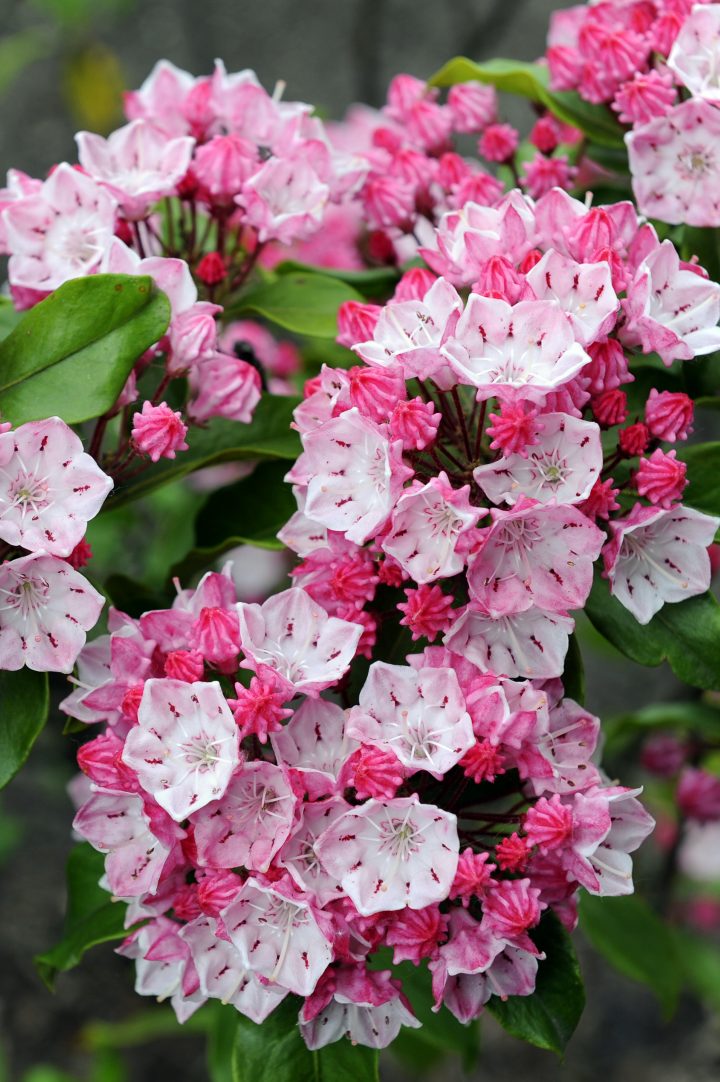
Plant Mountain Laurel in the spring or fall by digging a hole that is wider and deeper than the root ball.
Then partially fill it back in with top soil and compost.
If you have neutral or alkaline soil, add some peat moss in with the top soil to provide extra acidity.
When you put the plant in the hole, don't plant it too deeply. It shouldn't be any deeper than it was in the pot.
In fact, Mountain Laurels often do better when the crown (where the stems meet the roots) is a little above ground and covered with mulch.
Otherwise, the crown can rot in the soil (which obviously isn't very good for the plant).
Water well and cover the soil around the plant with a 2″ to 4″ layer of mulch.
How to grow
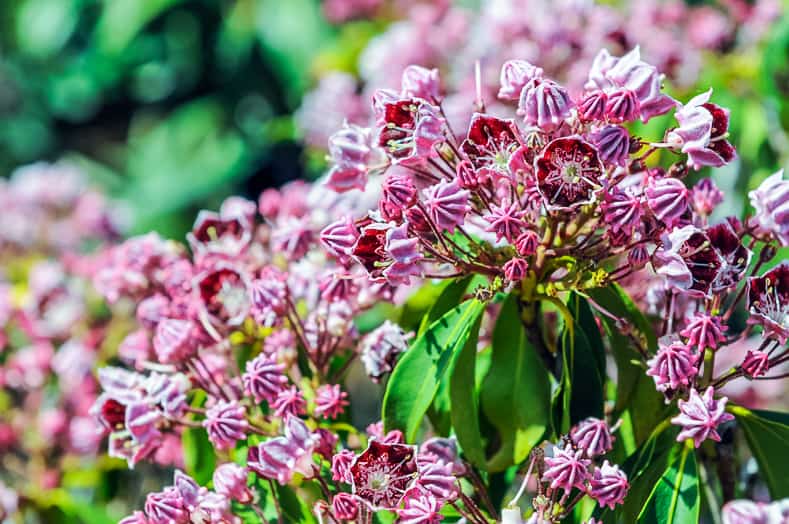
Mountain laurels are generally easy plants to grow and don't require much maintenance. But there are a couple of things you can do to ensure they are happy in your garden.
Mulch
These bushes have very shallow root systems.
That means they can dry out very quickly so covering the roots with a 2″ to 4″ layer of organic mulch every year in the spring helps to keep the soil cool and moist.
Pine needles, wood chips or ground bark work well. (I like ground bark the best because it decomposes into organic matter that helps with the soil drainage).
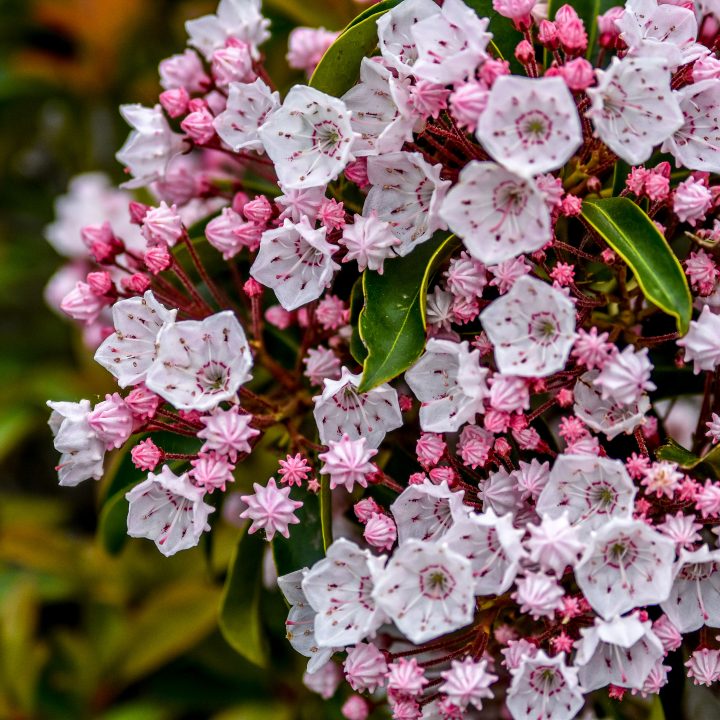
Water
Mountain Laurels need a lot of water, especially when they are starting out.
Try to water them deeply a couple of times a week.
Having said that, the soil should be moist but not wet. So maintaining good drainage is also important.
How to transplant
If you have a Mountain Laurel that was planted in the wrong place and needs to be moved, you'll be happy to know that transplanting isn't too hard as long as the bush isn't too big.
For the best success, do this in the fall before the first frost so the plant has a little time to get acclimated to its new environment before winter sets in.
Start by digging a hole in the new location where you want the bush to grow. It should be 2 feet to 4 feet wide and about 2 feet deep (depending on the size of the plant).
Have top soil, compost and peat moss ready to go. The idea is to have the plant out of the ground for as short an amount of time as possible.
Now use a sharp spade to dig up the plant.
Since the roots are shallow, you won't have to dig down very far to get them all out. But try to dig at least 1 to 2 feet out from the stem on all sides (the bigger the plant, the further out you should go).
Use a wheel barrow or wagon to move the bush to its new location. Then plant in the new hole with a mixture of top soil, compost and peat moss. Make sure that all of the roots are in the ground. (You may need to dig the hole out some more in order to do this).
Then mulch and water as you would for a new plant.
Pruning
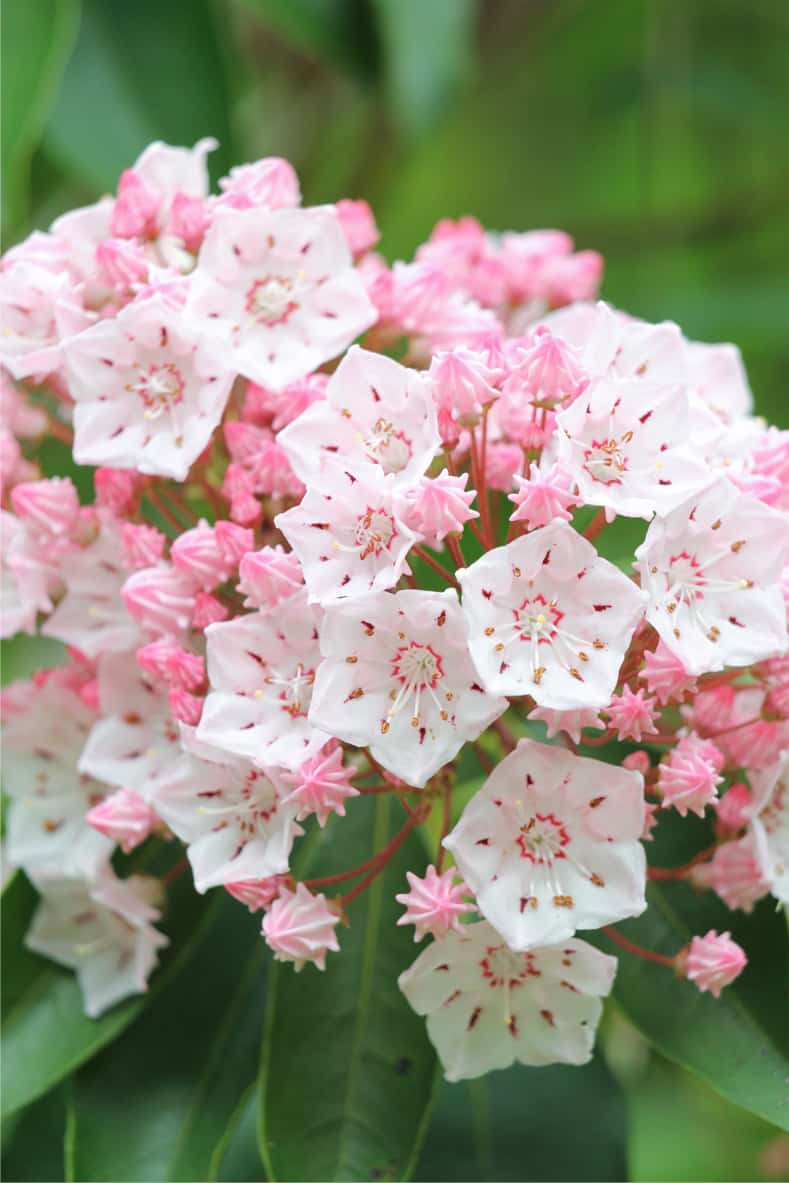
Mountain Laurels do not need a lot of pruning (my kind of plant!)
The buds for next year's flowers start forming shortly after the previous year's blooms are finished.
So if you do want to prune to shape the plant, do it immediately after the blossoms are spent to avoid cutting off next year's buds.
To encourage the plant to put its energy into growing bigger flowers instead of seeds, pinch off the flower heads at the top of the stem when they are finished blooming.
Fertilizing
Adding a fertilizer for acid-loving plants* in the spring will help to keep your Mountain Laurel happy.
However, because the Kalmia latifolia roots are so shallow, using full strength fertilizer can burn them. Mixing it at 1/4 strength will still provide nutrients for the shrub without causing any damage. It also means your fertilizer will last longer 🙂
Another option is to top-dress the soil around your plant with a mixture compost and peat moss. This will enrich the growing conditions and help to acidify the soil.
Diseases and pests
While Mountain Laurels are generally pest-free, they are susceptible to fungal diseases such as leaf spots and botryosphaeria canker.
Both are largely preventable by avoiding overhead watering, planting in well drained acidic soil and not overcrowding.
Root rot is another disorder that occurs when the shrubs are not planted in the right location. Heavy soil that doesn't drain well will literally cause the roots to rot and the plant will die. There is no solution other than picking a better spot for the plant to grow.
Since these shrubs are such close cousins to Rhododendrons, they share most of the same problems. You can read more about those diseases and how to treat them HERE.
Azalea lace bugs and whiteflies can also be an issue.
While they don't usually seriously harm healthy plants, they will cause the leaves to get spots and look deformed.
You can wash the undersides of the leaves with insecticidal soap or horticultural oil in the spring to help control them.

Is Mountain Laurel poisonous?
All parts of the Mountain Laurel plant are poisonous if ingested.
So it may not be a good selection for you if you have pets or young children that might try to eat them.
That poison does have some benefits though. Deer usually avoid the shrub, especially if you plant native varieties (as opposed to cultivated ones). Although (as always), they will eat pretty much anything if they are hungry.
Now I'm off to plan the next shady spot that I can fit one of these in to. And hopefully you have found some inspiration for planting a mountain laurel or two of your own.
Other shade loving shrubs you might like
Have comments or questions about how to plant and grow mountain laurel? Tell us in the section below.
This post was originally published on June 16, 2017 but was updated with new content on November 23, 2024.

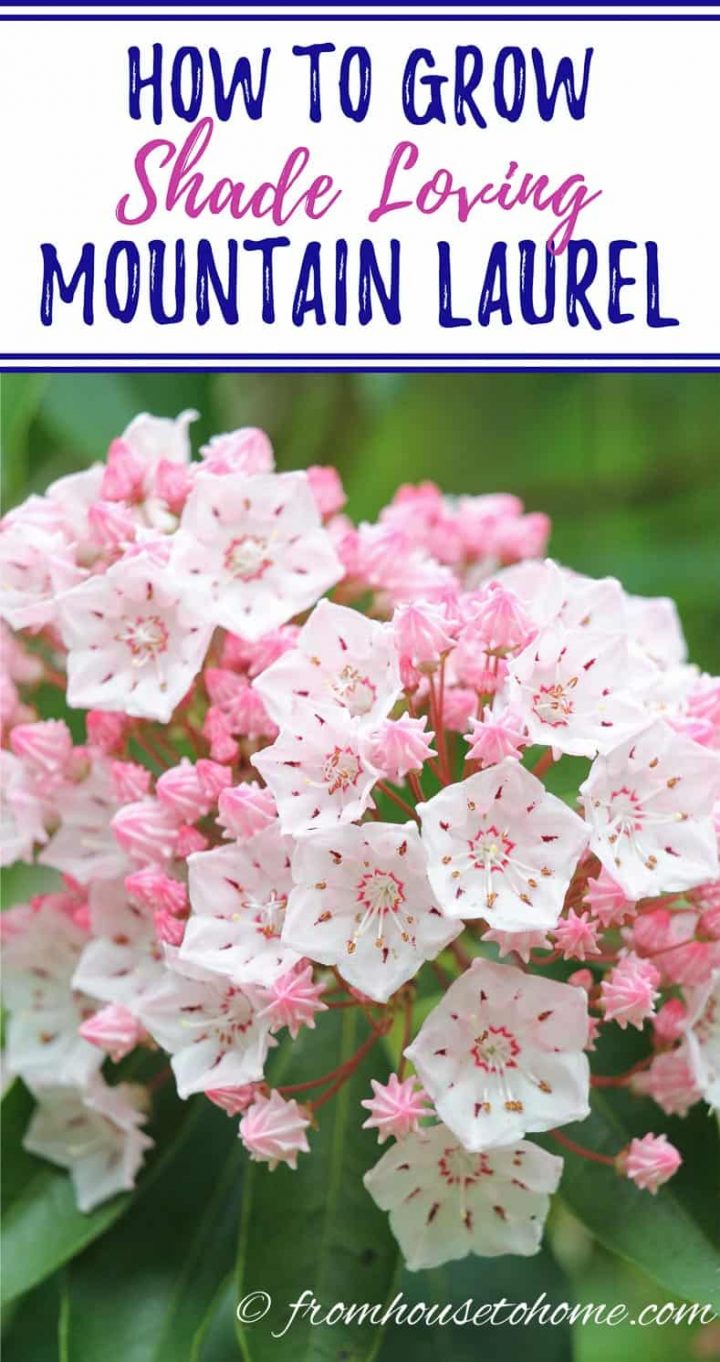
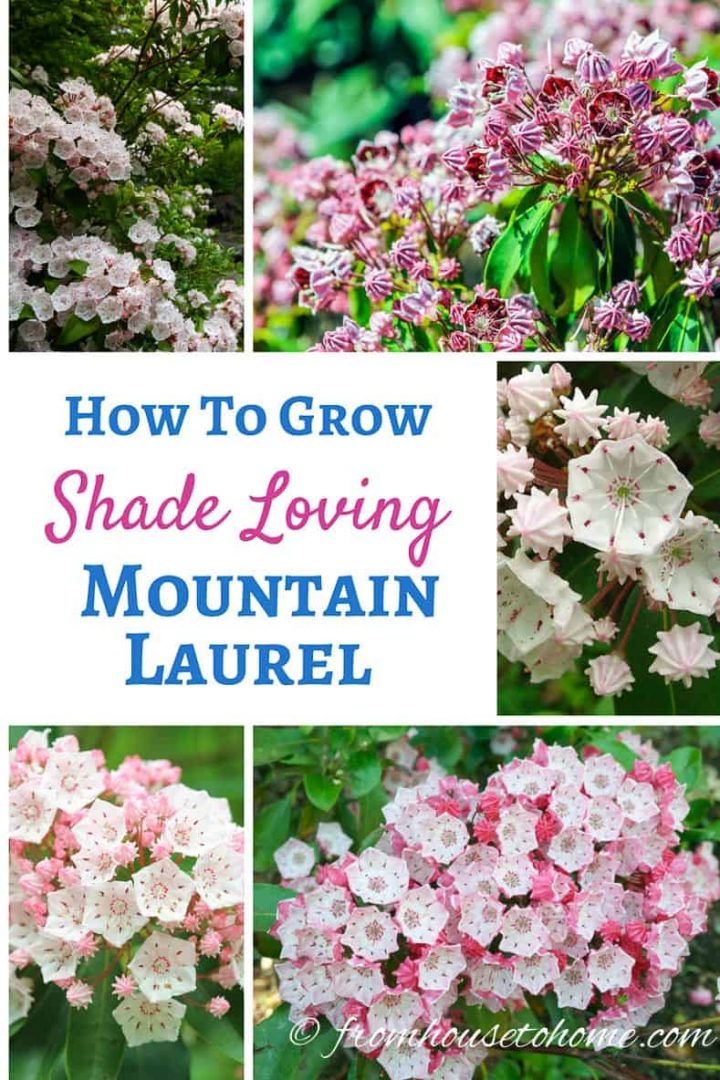

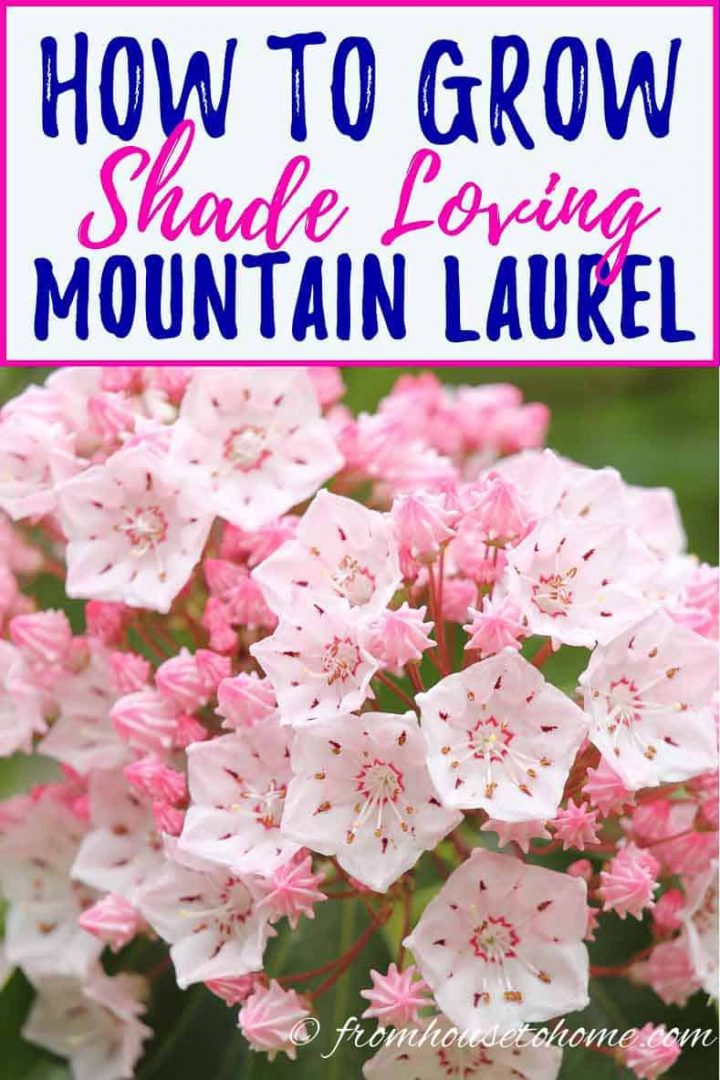

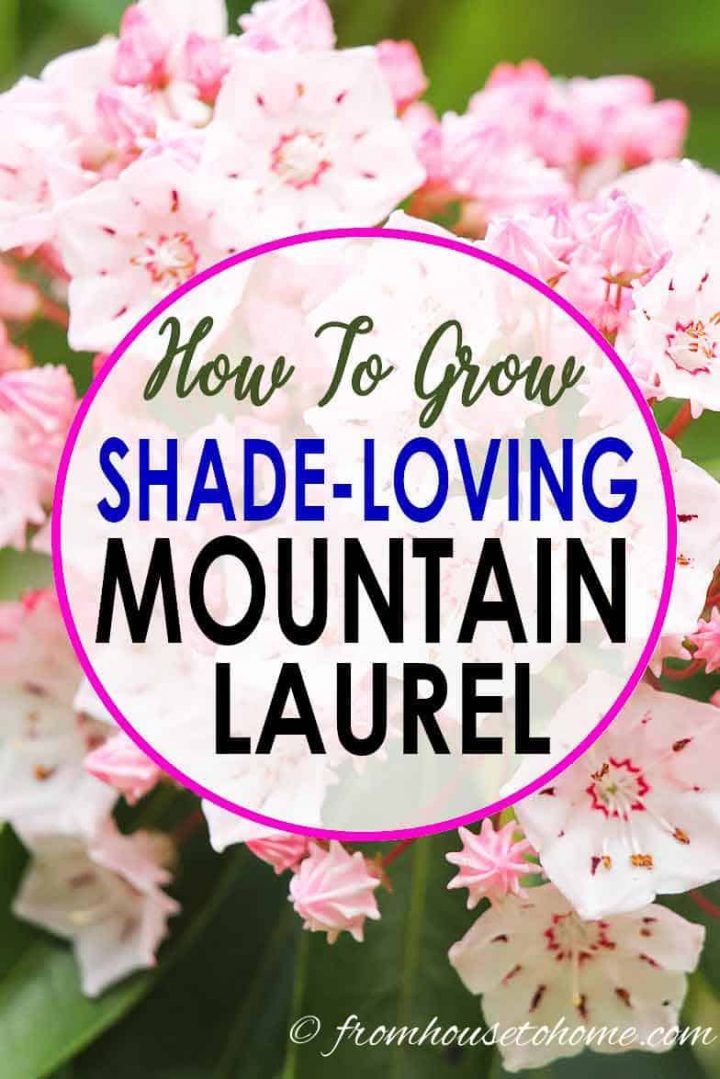
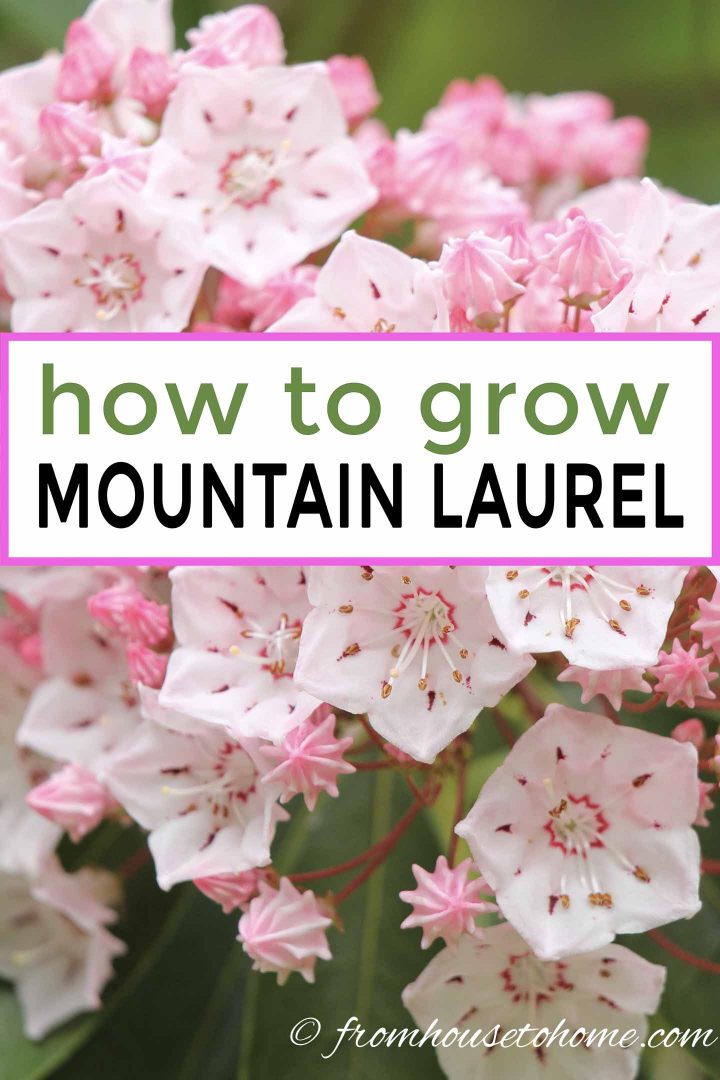
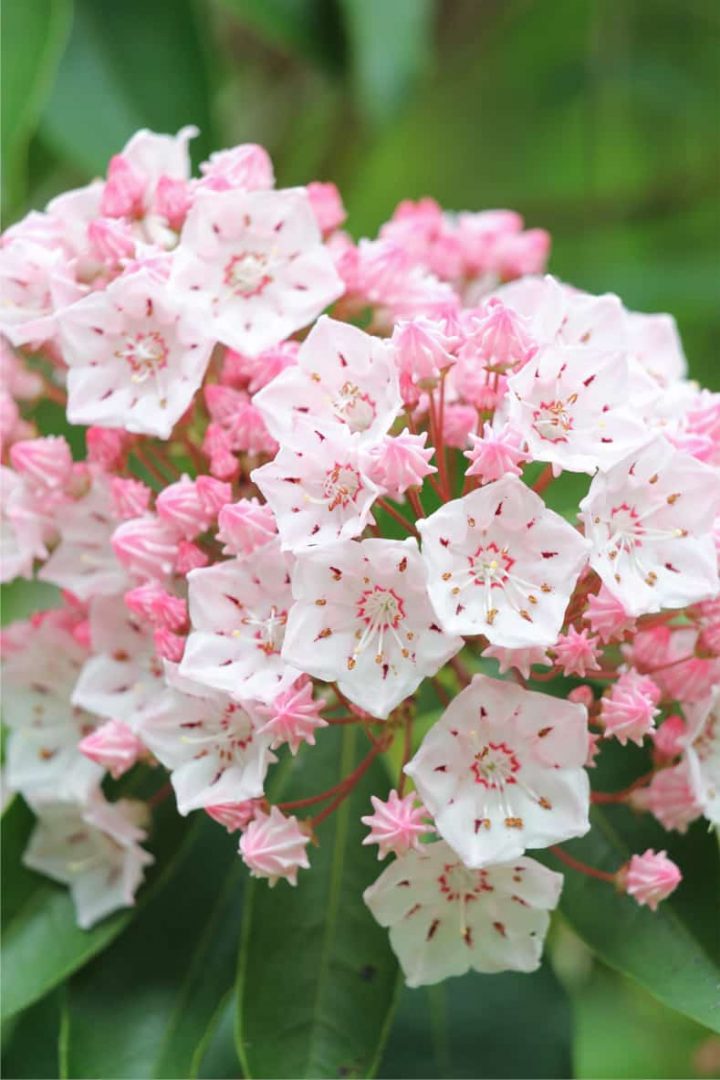
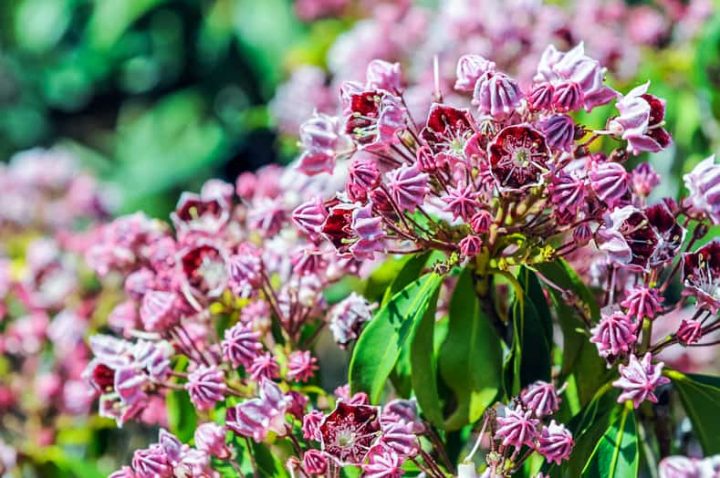
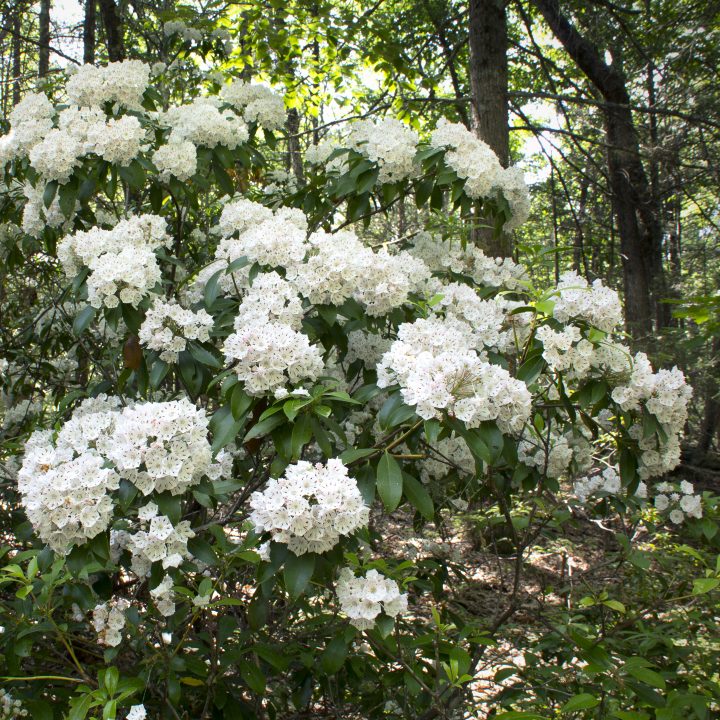

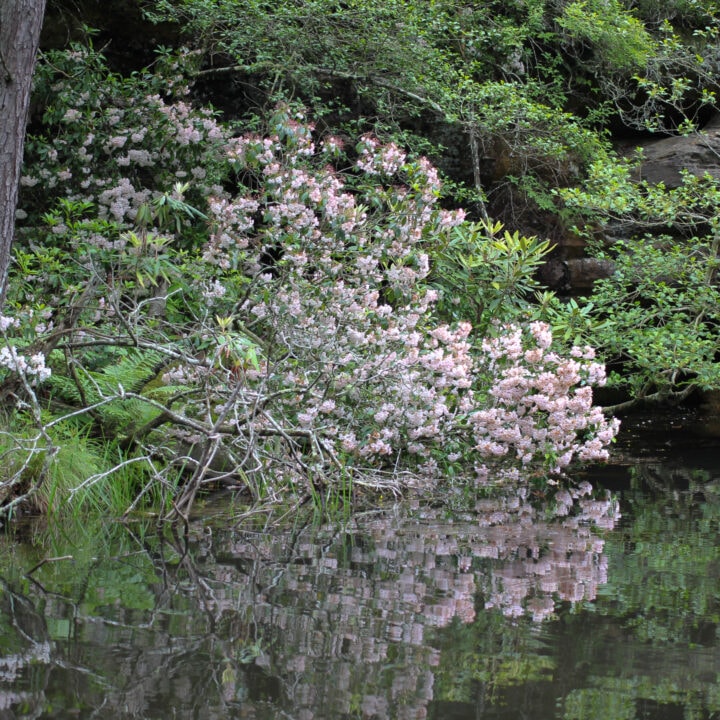

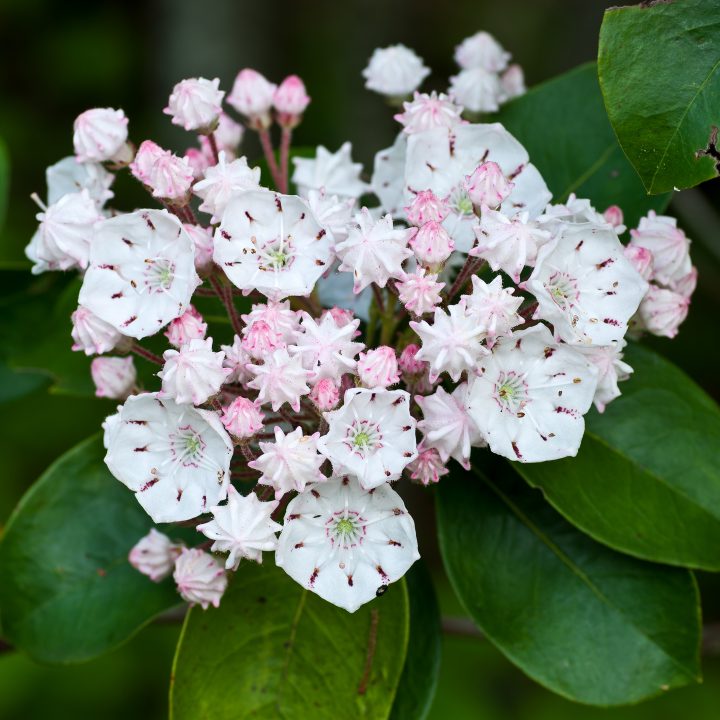
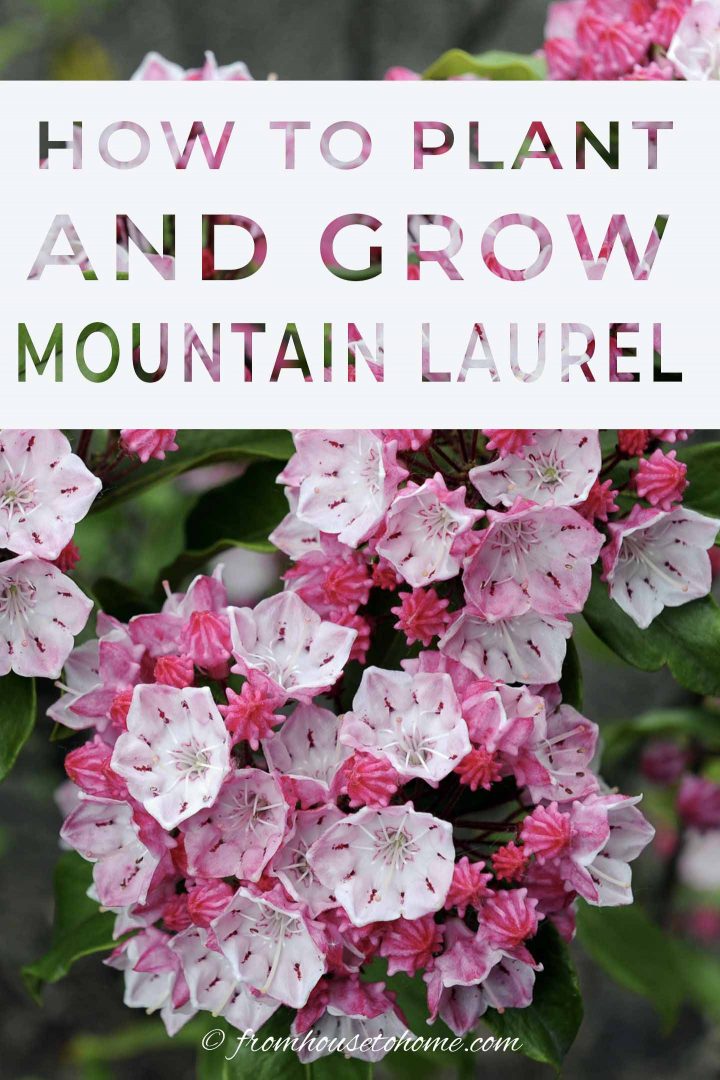
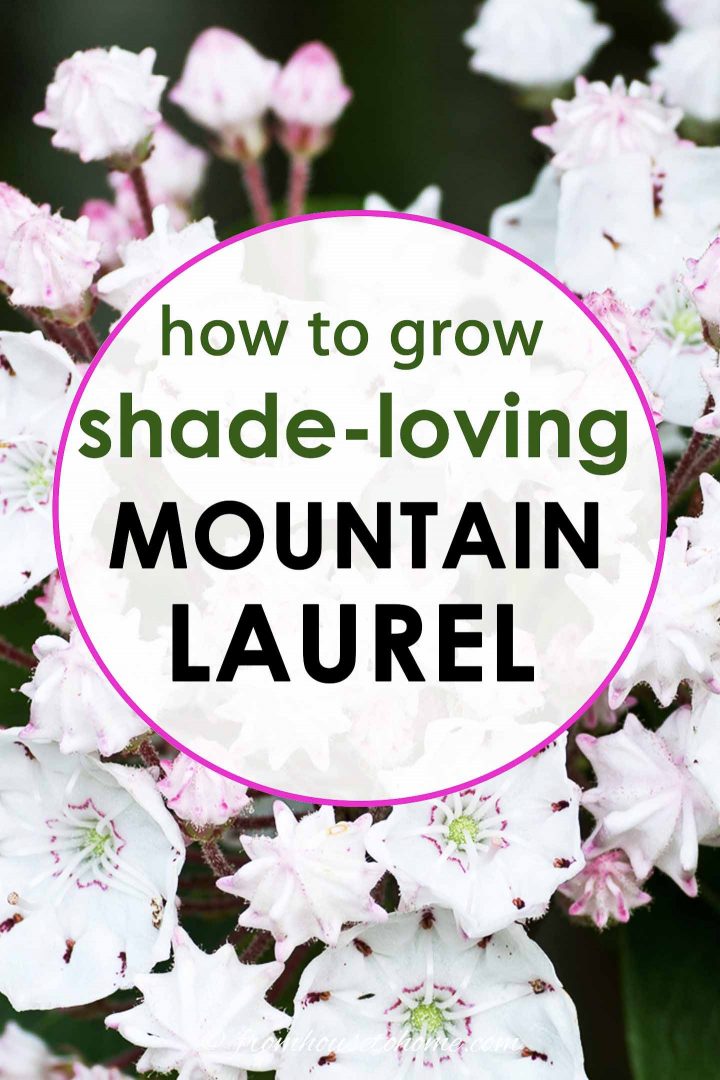
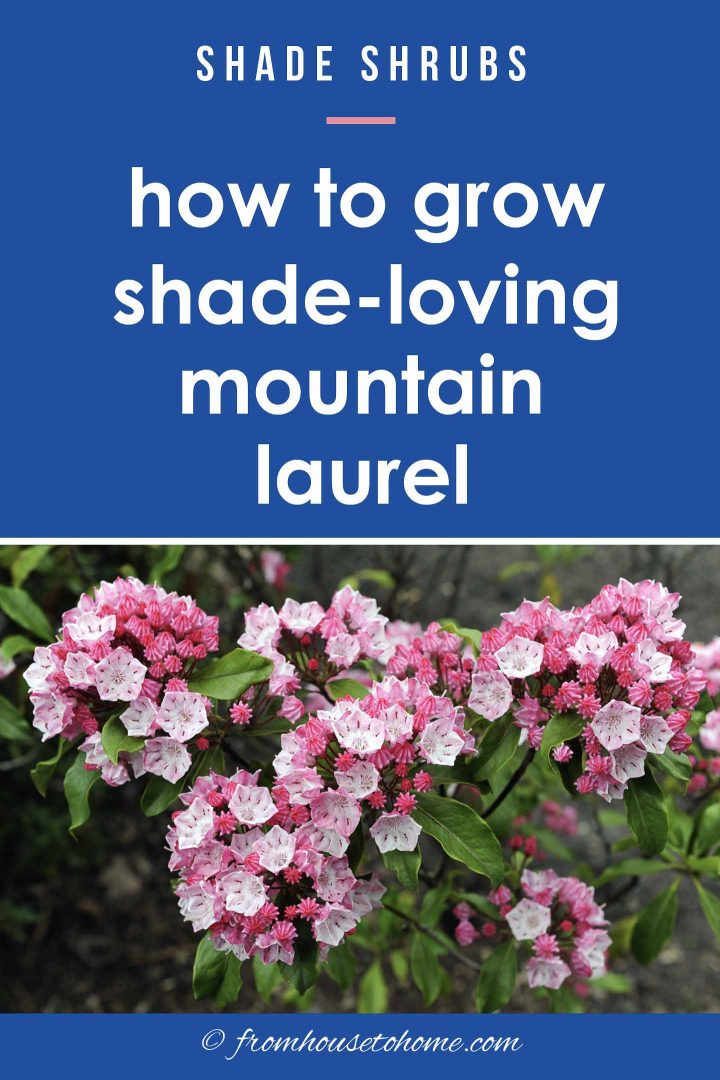

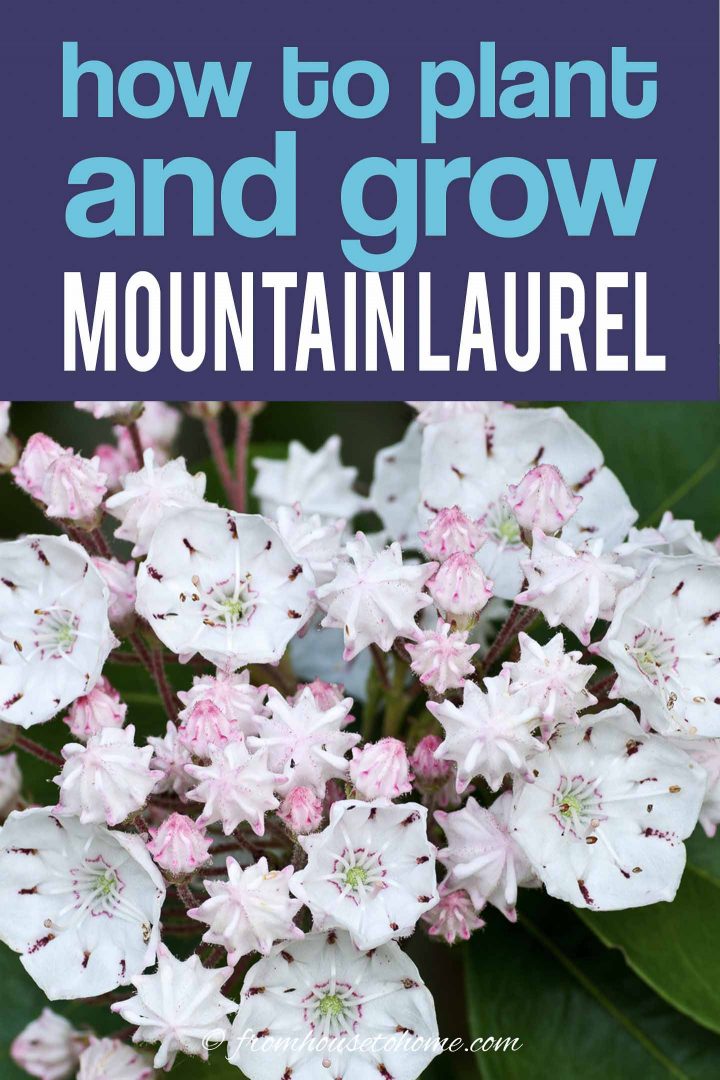
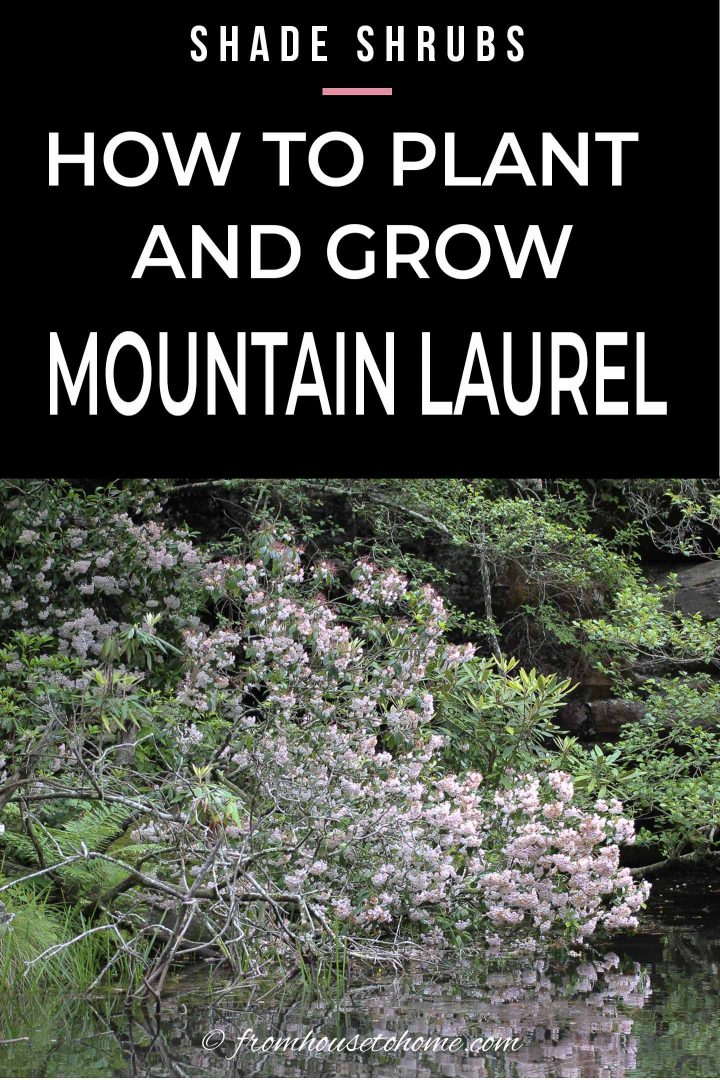
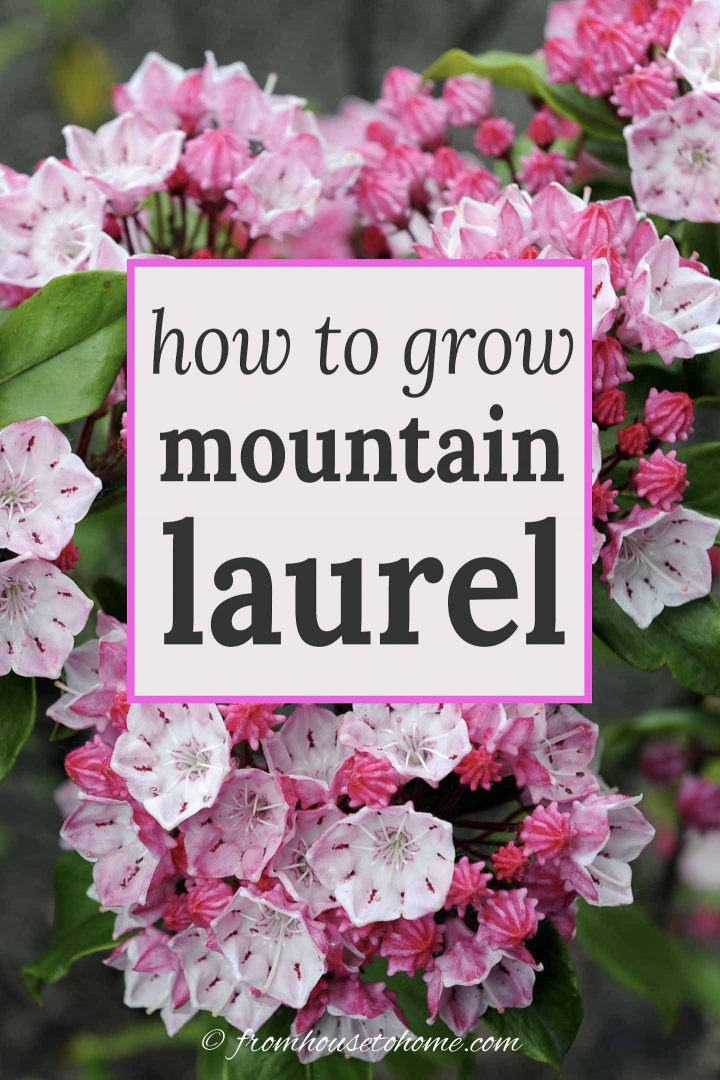
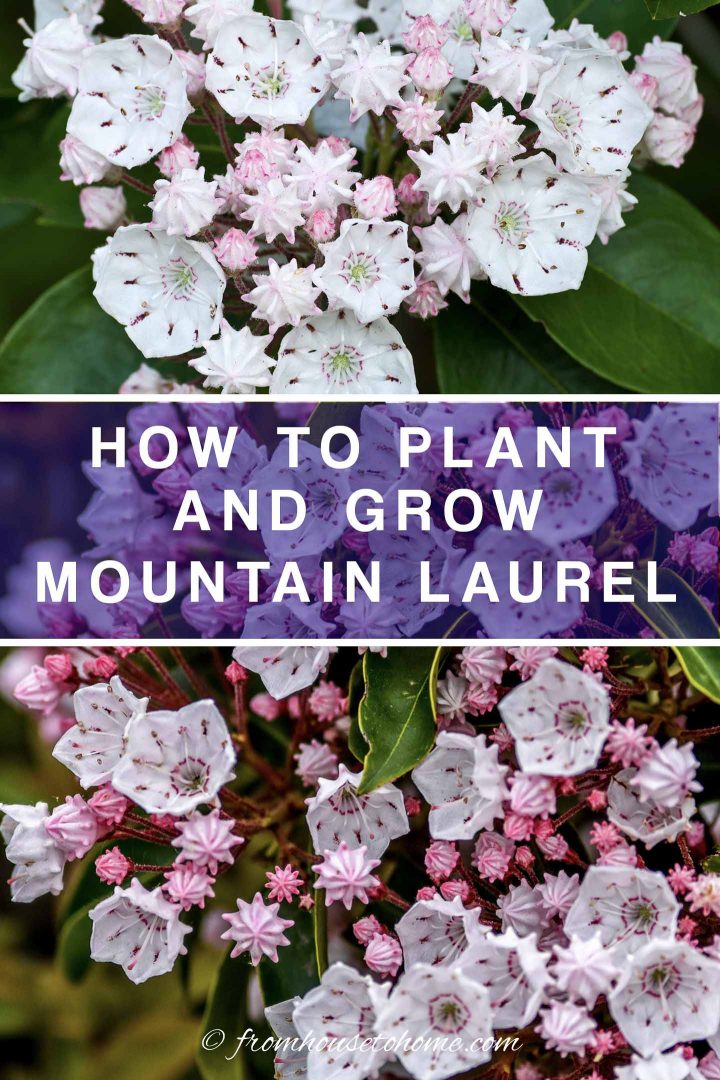
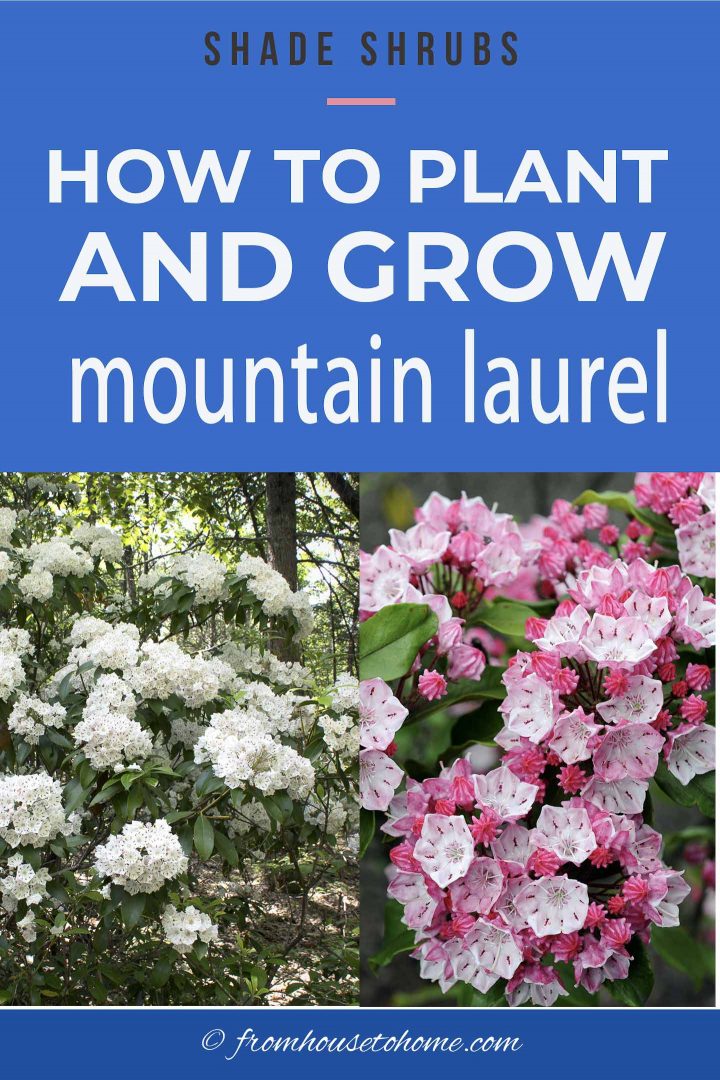
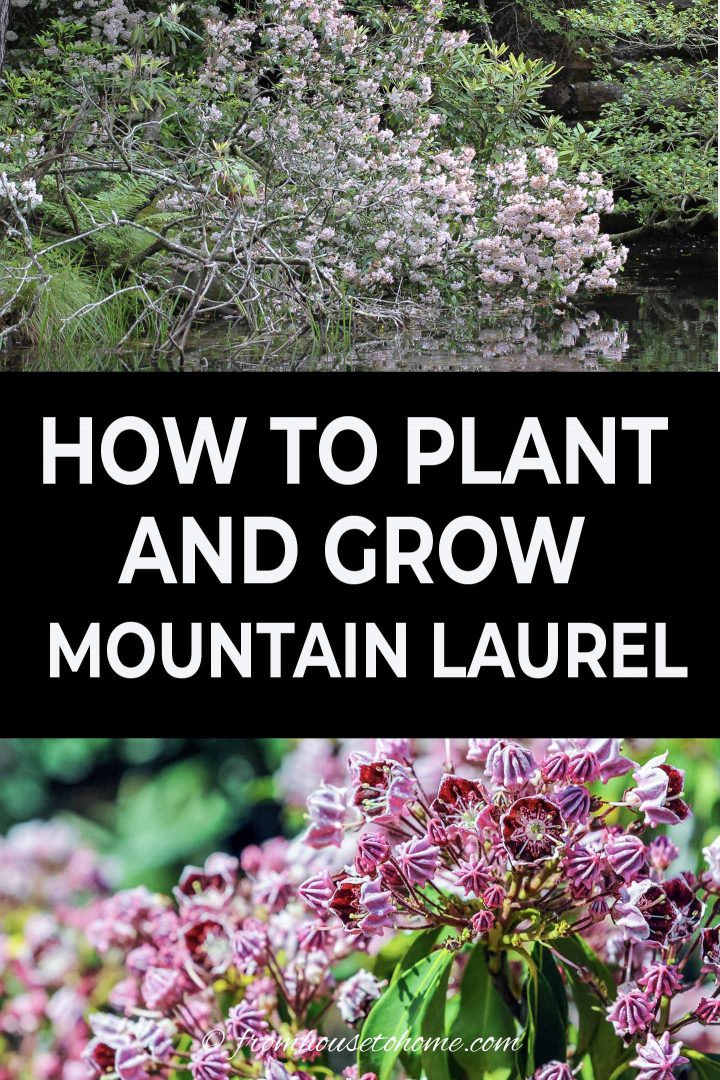
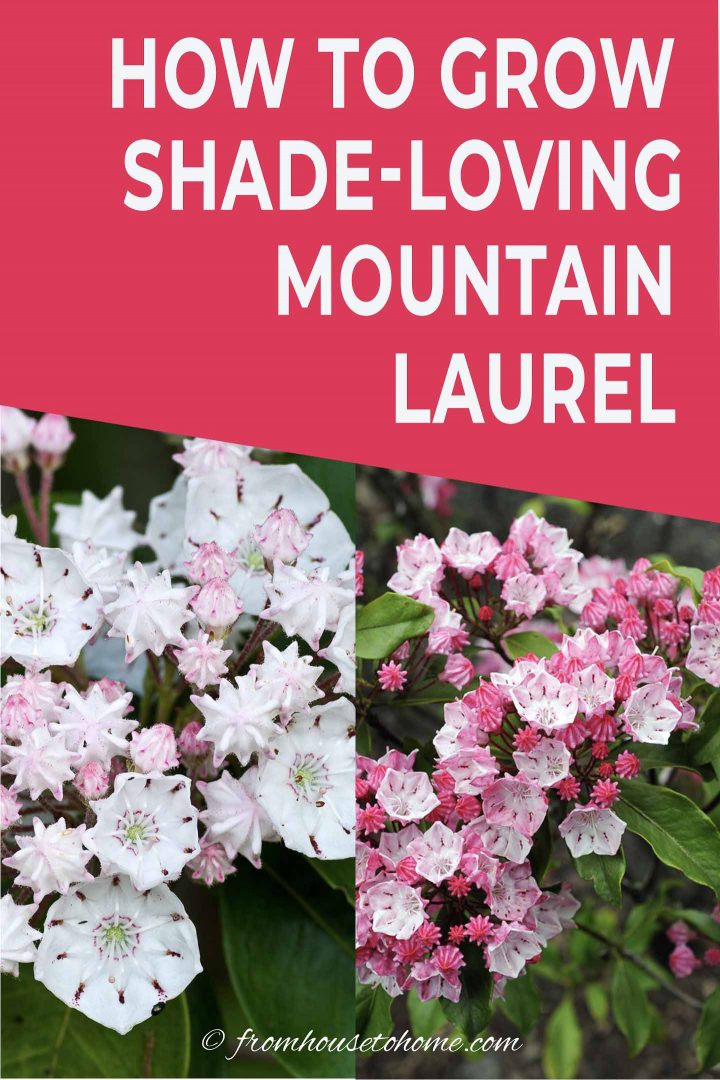

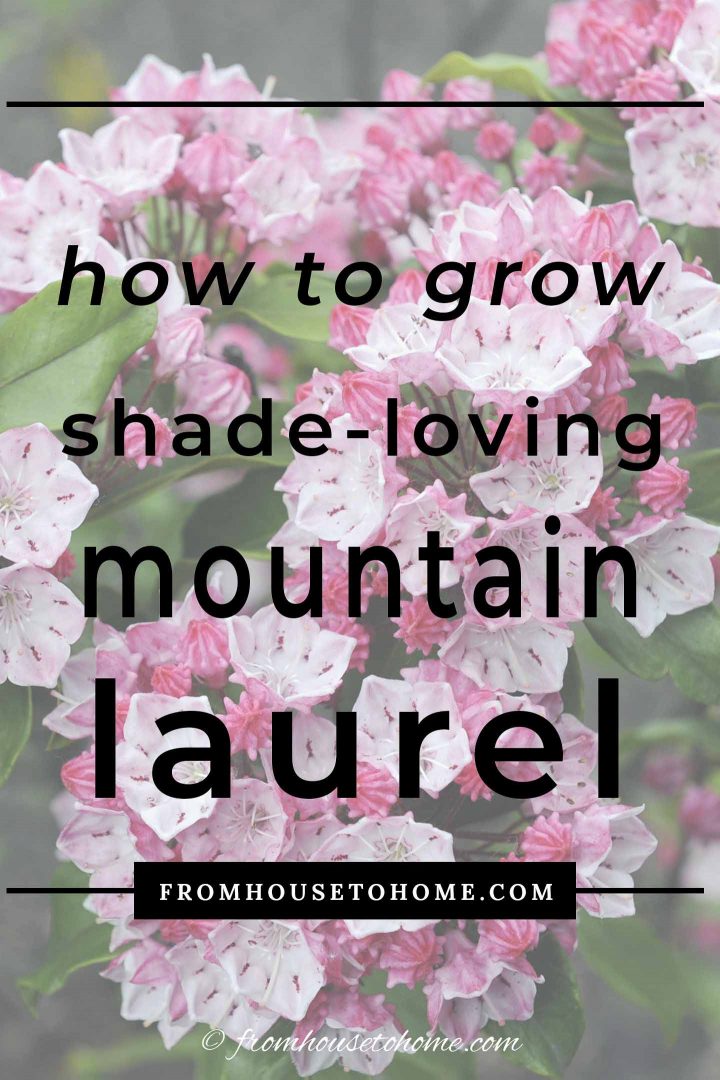
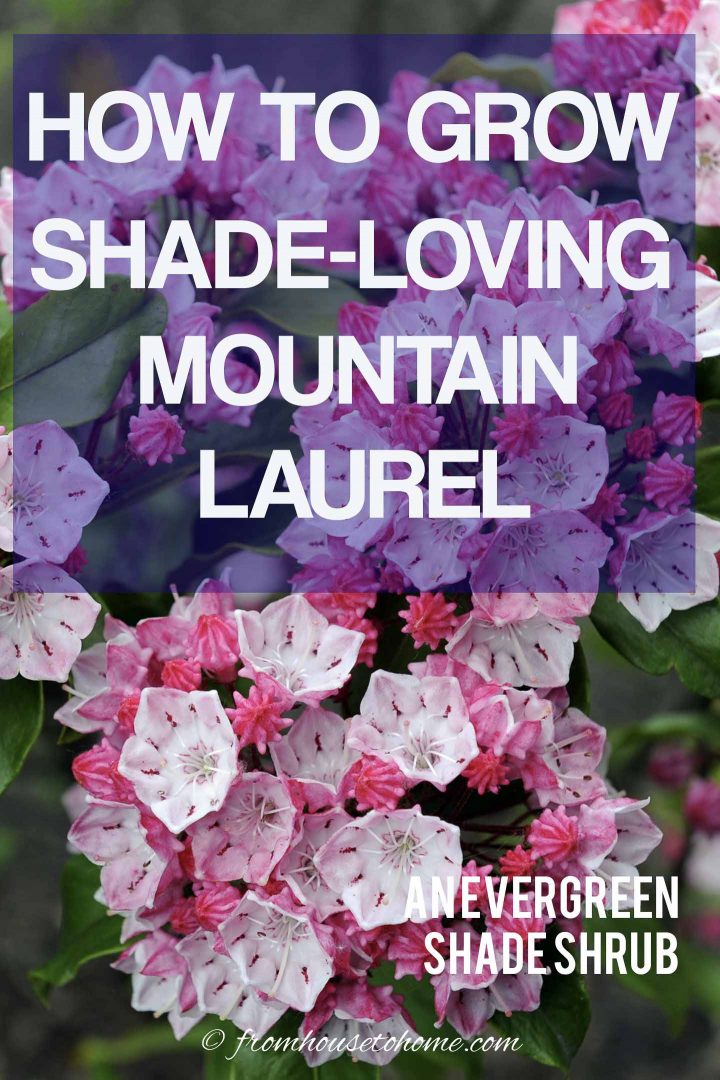
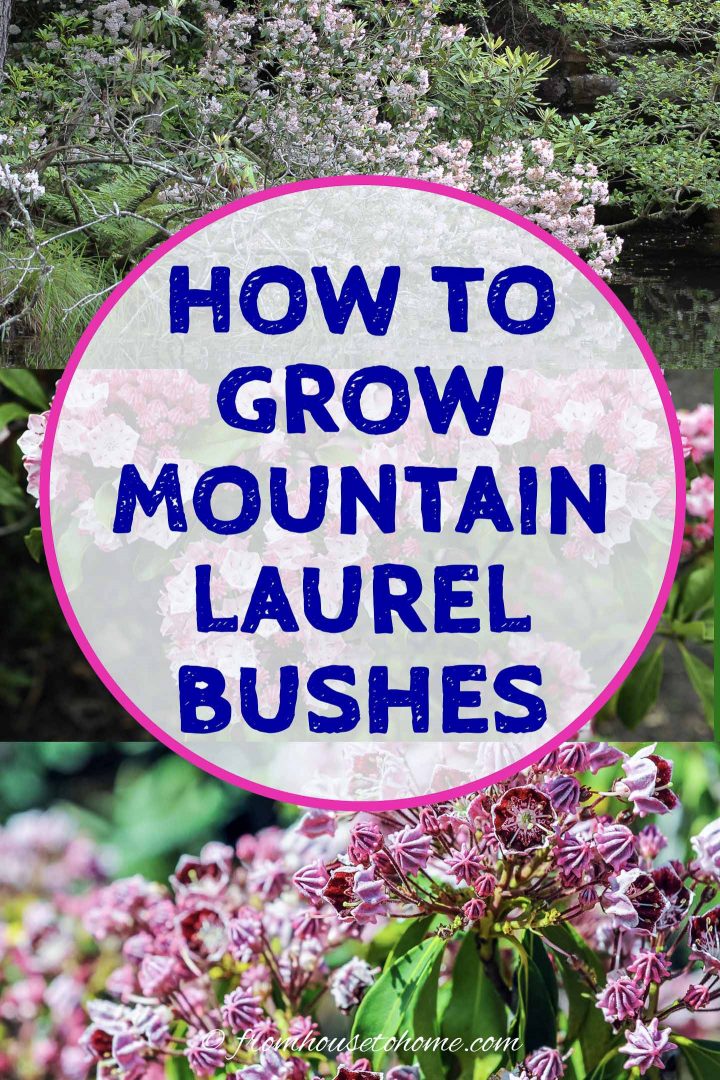

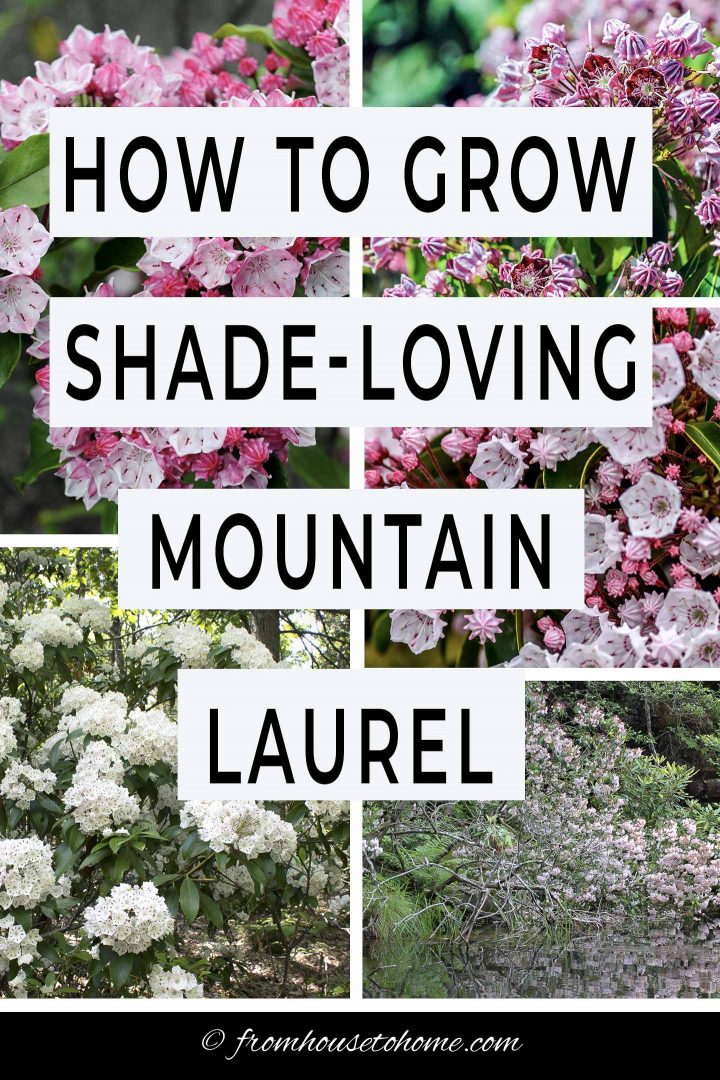
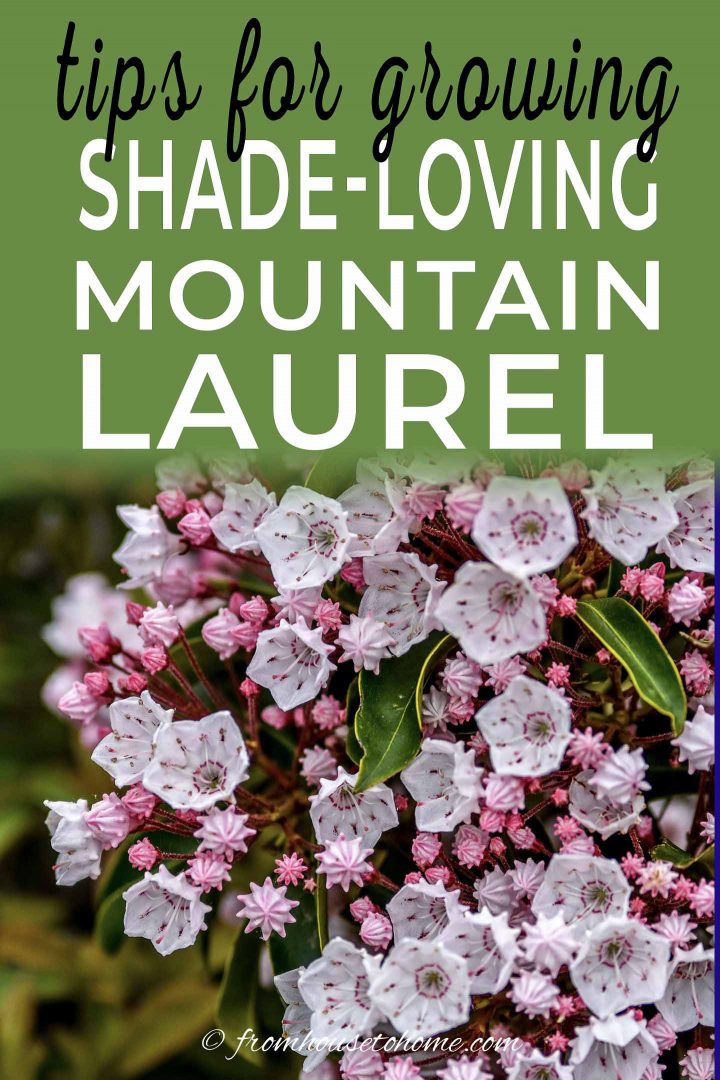
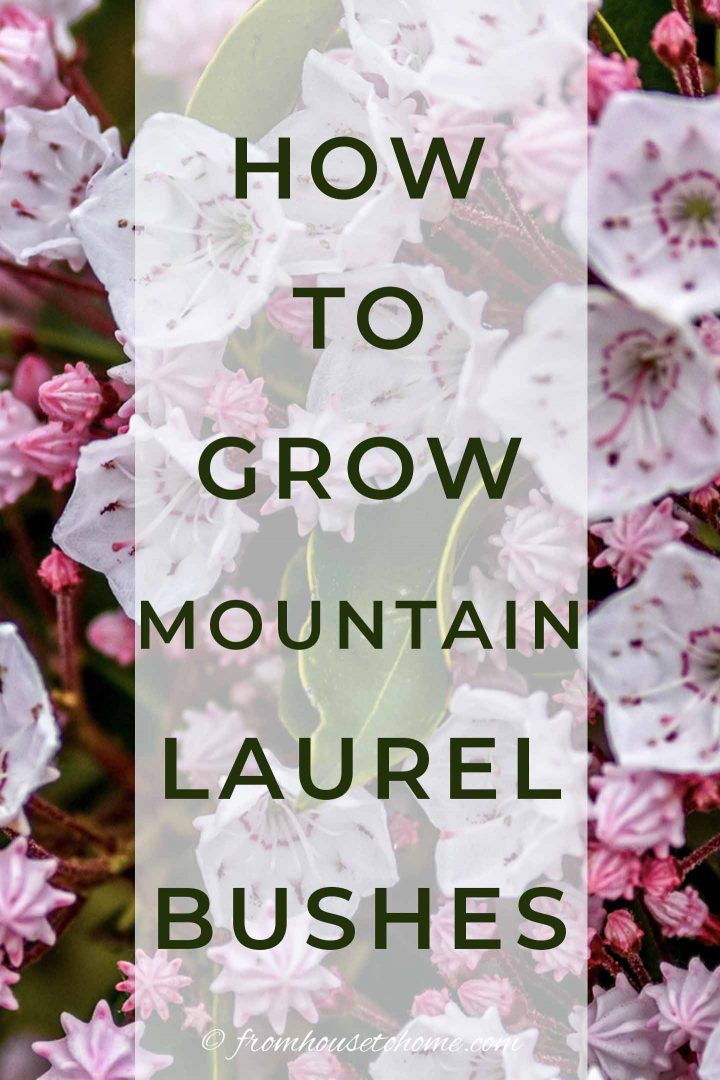
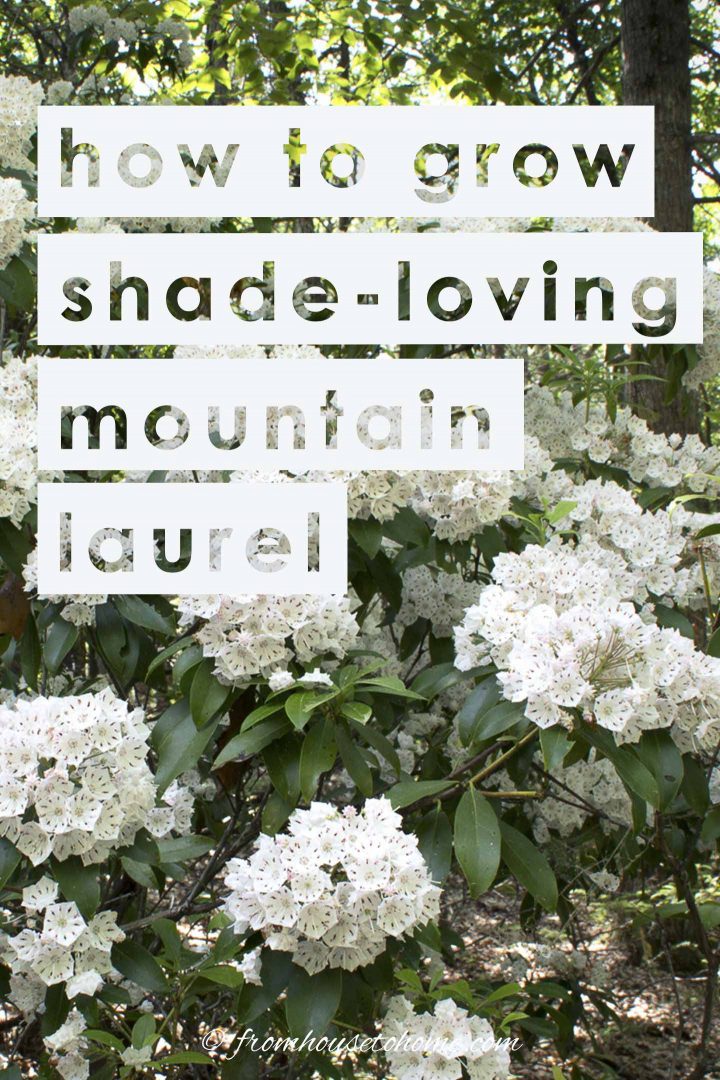
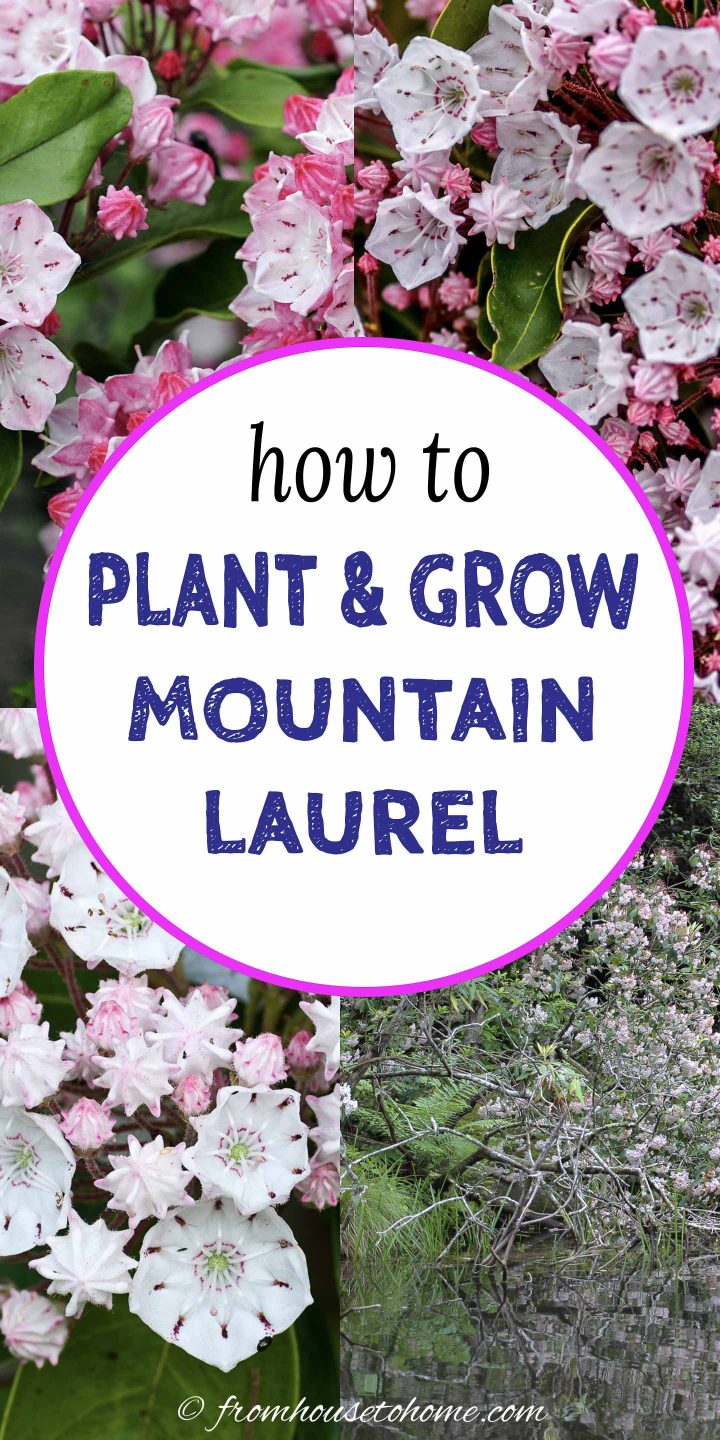
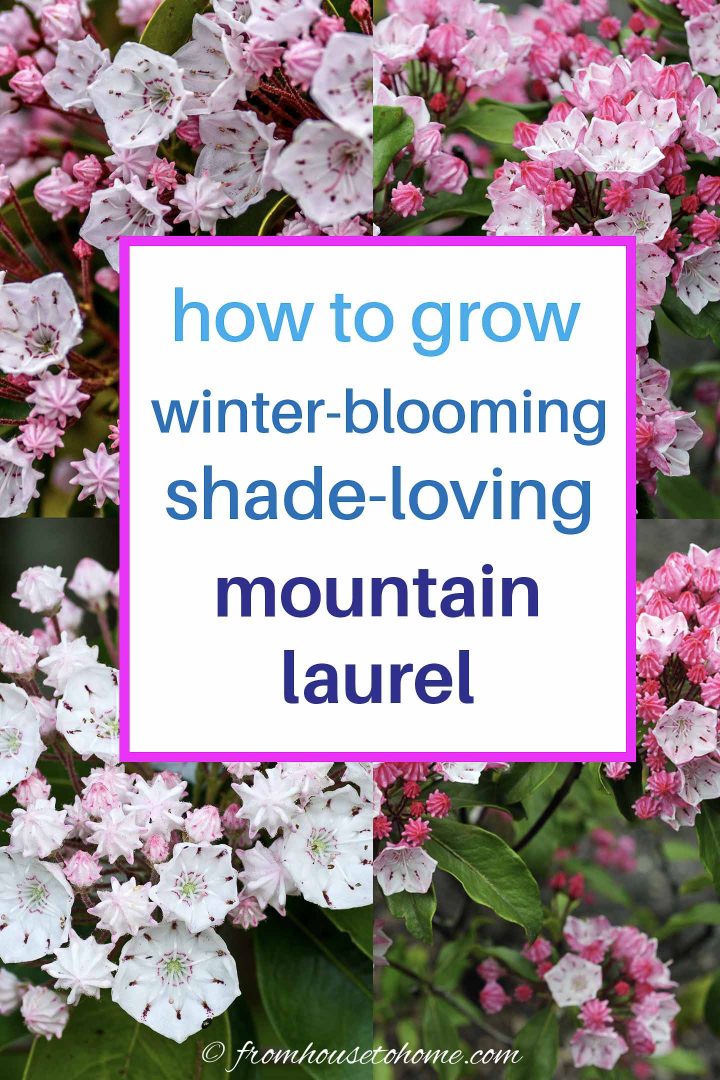
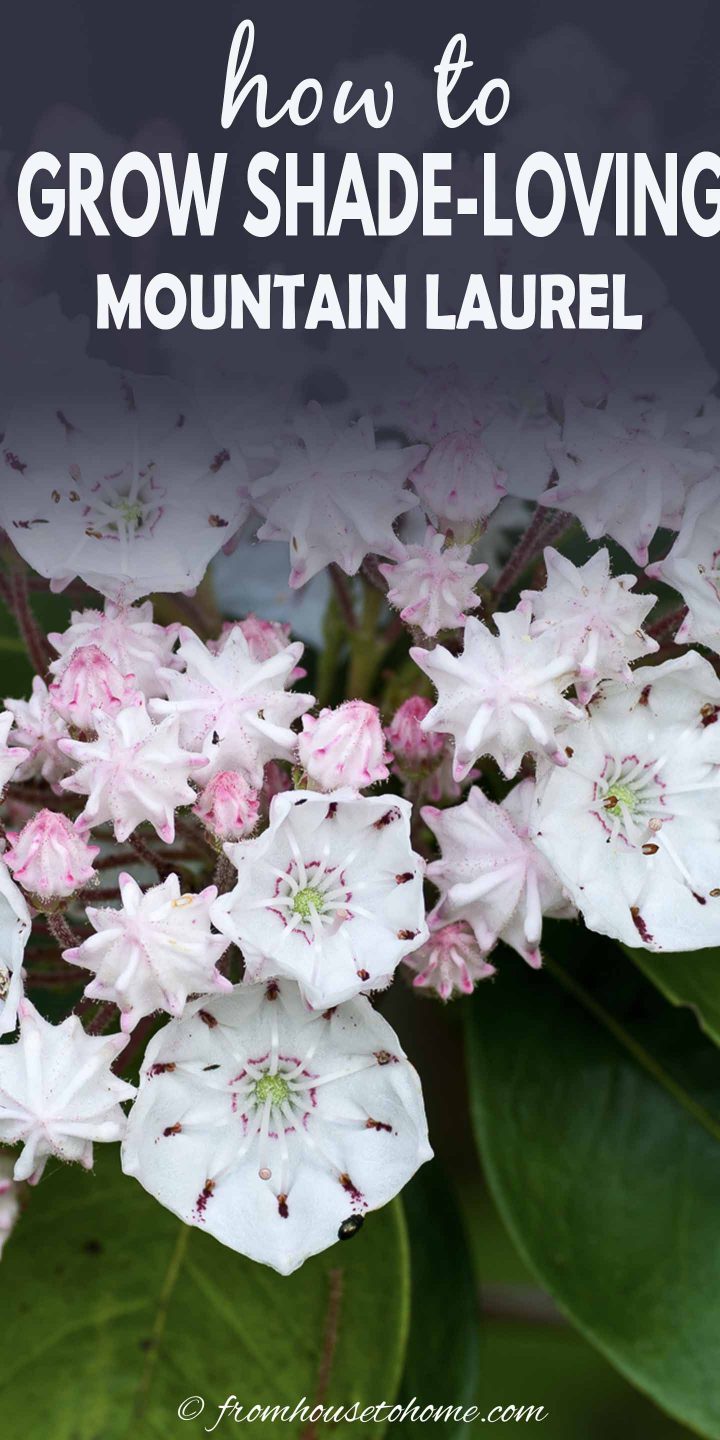
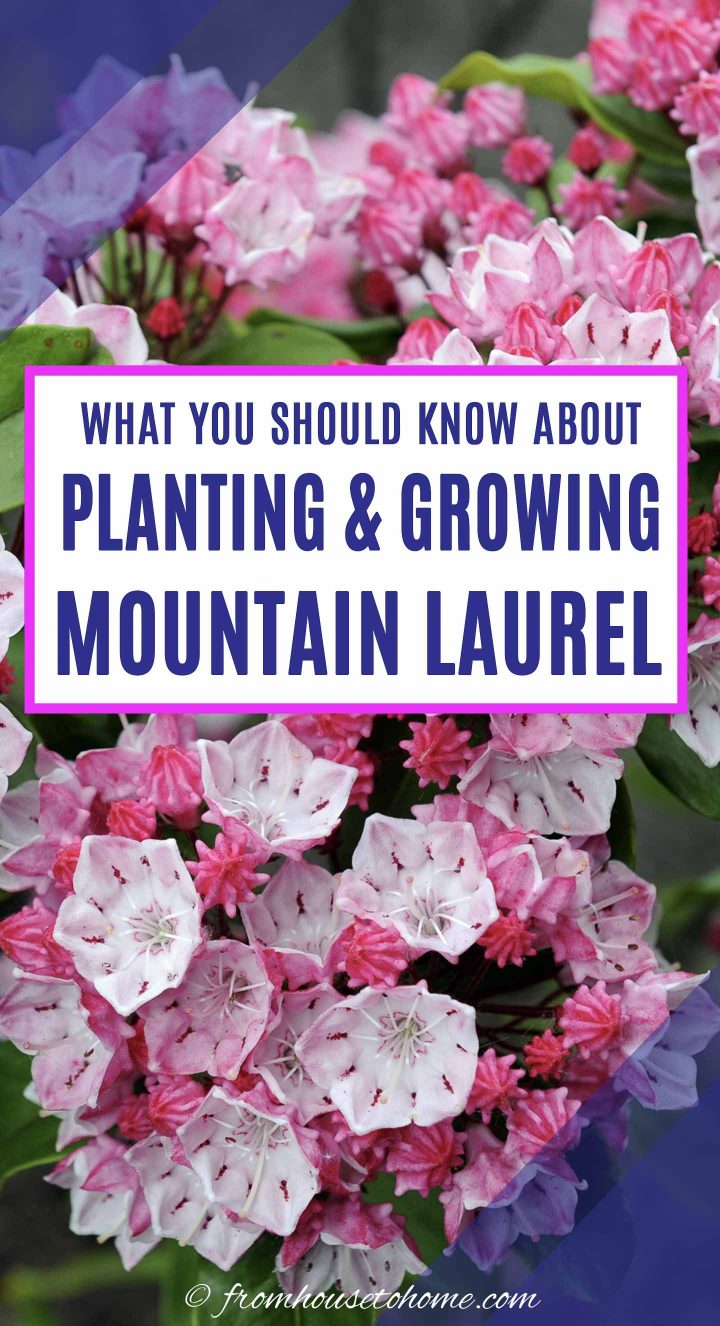

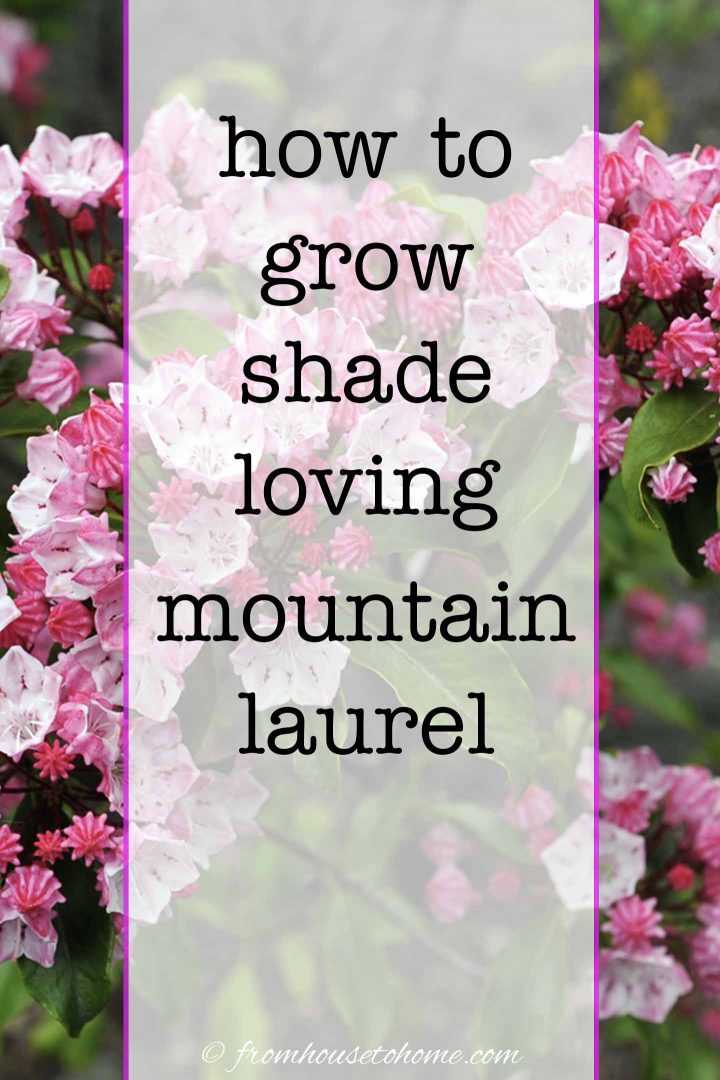
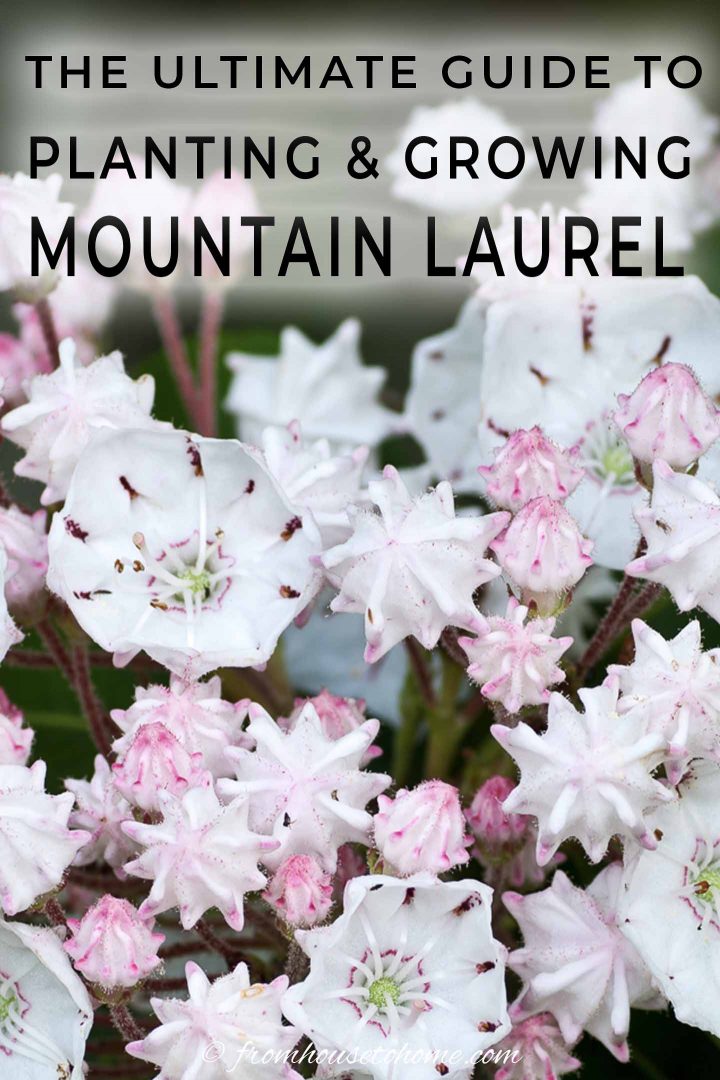
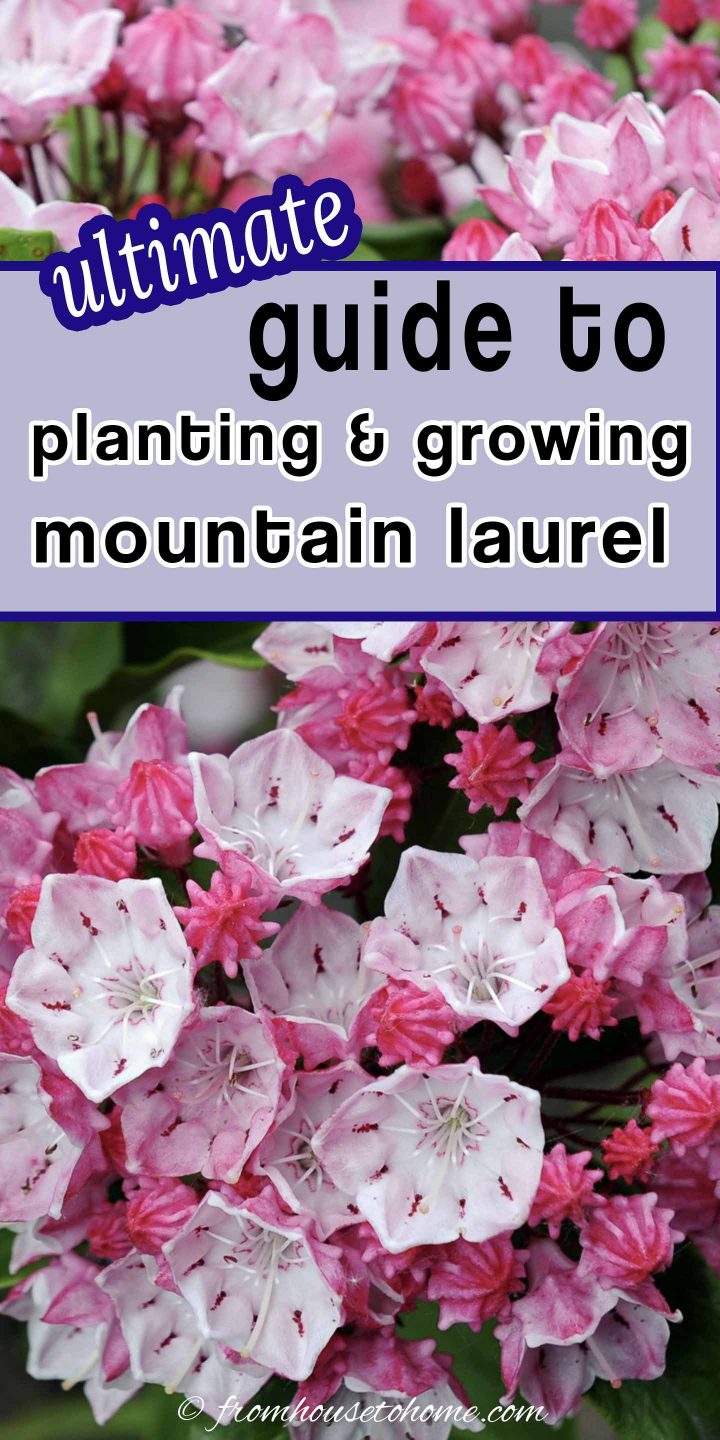
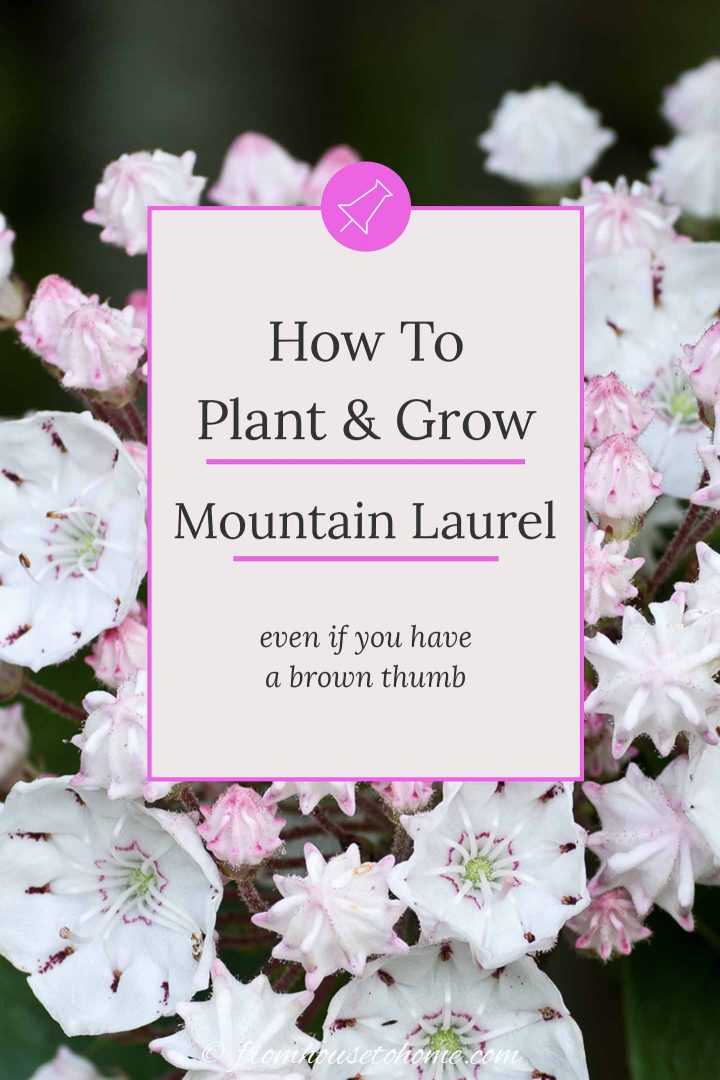
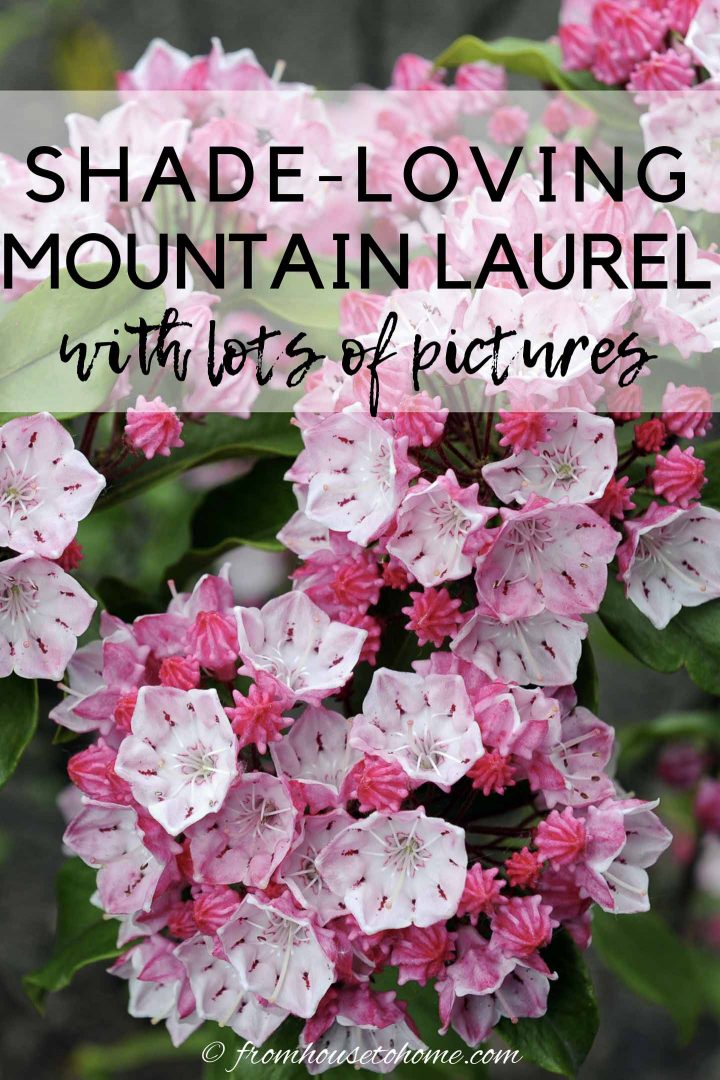

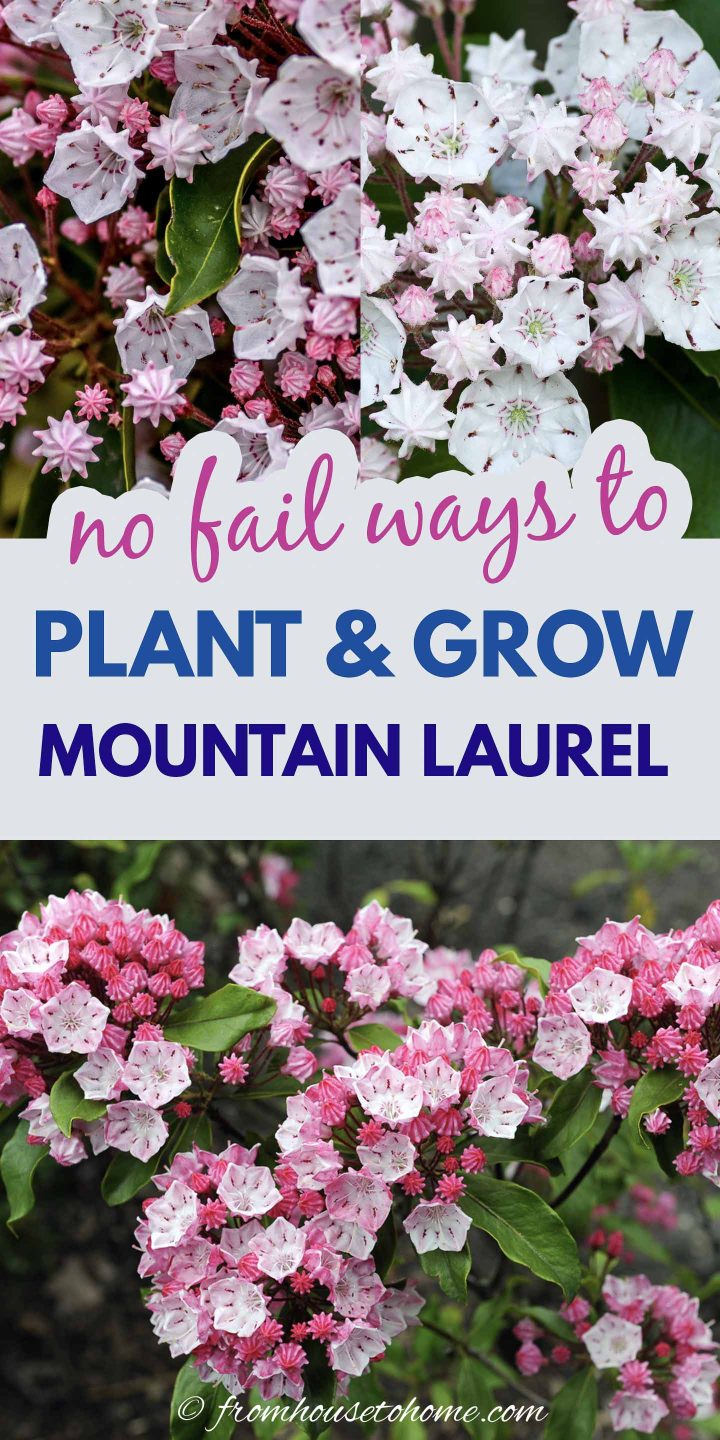
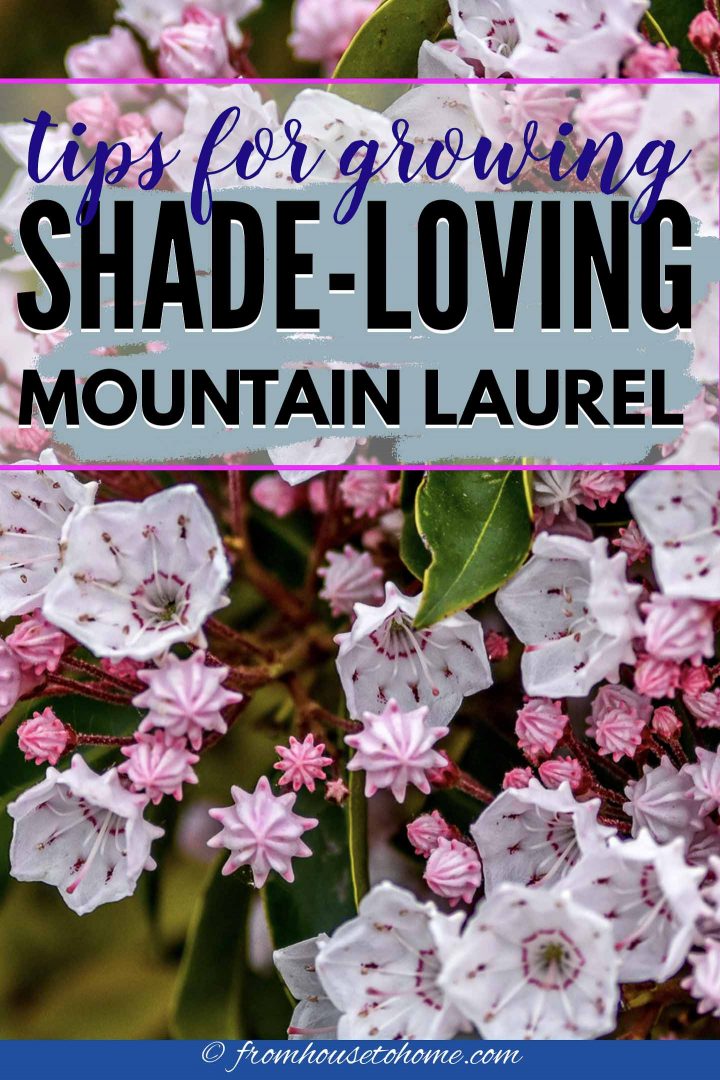
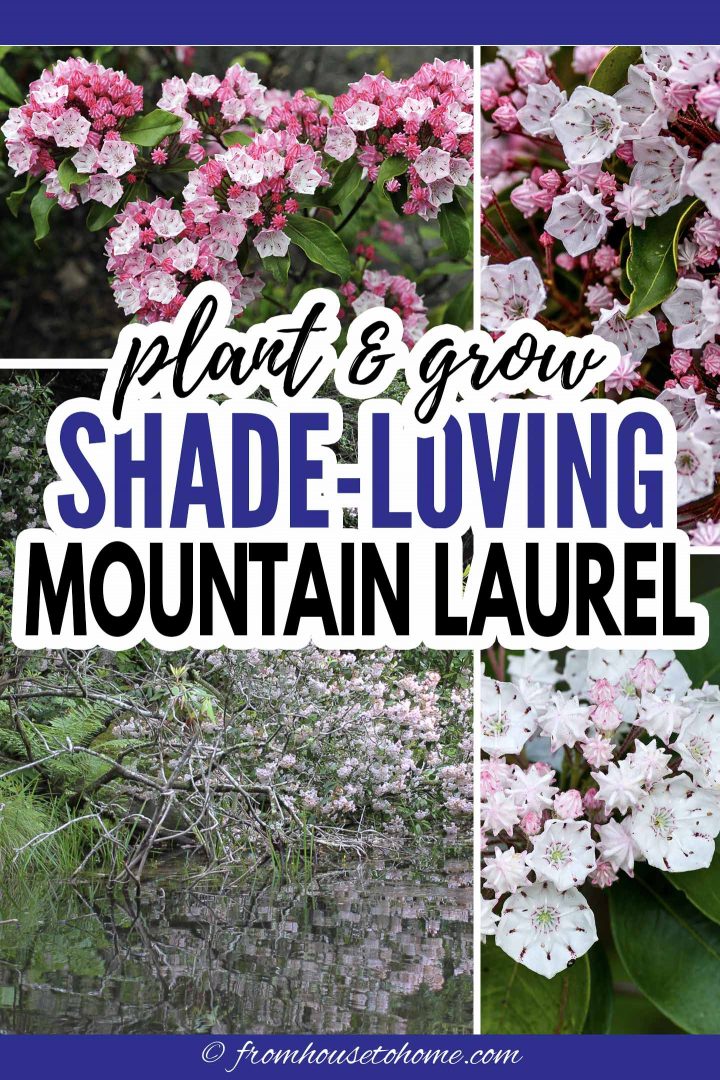
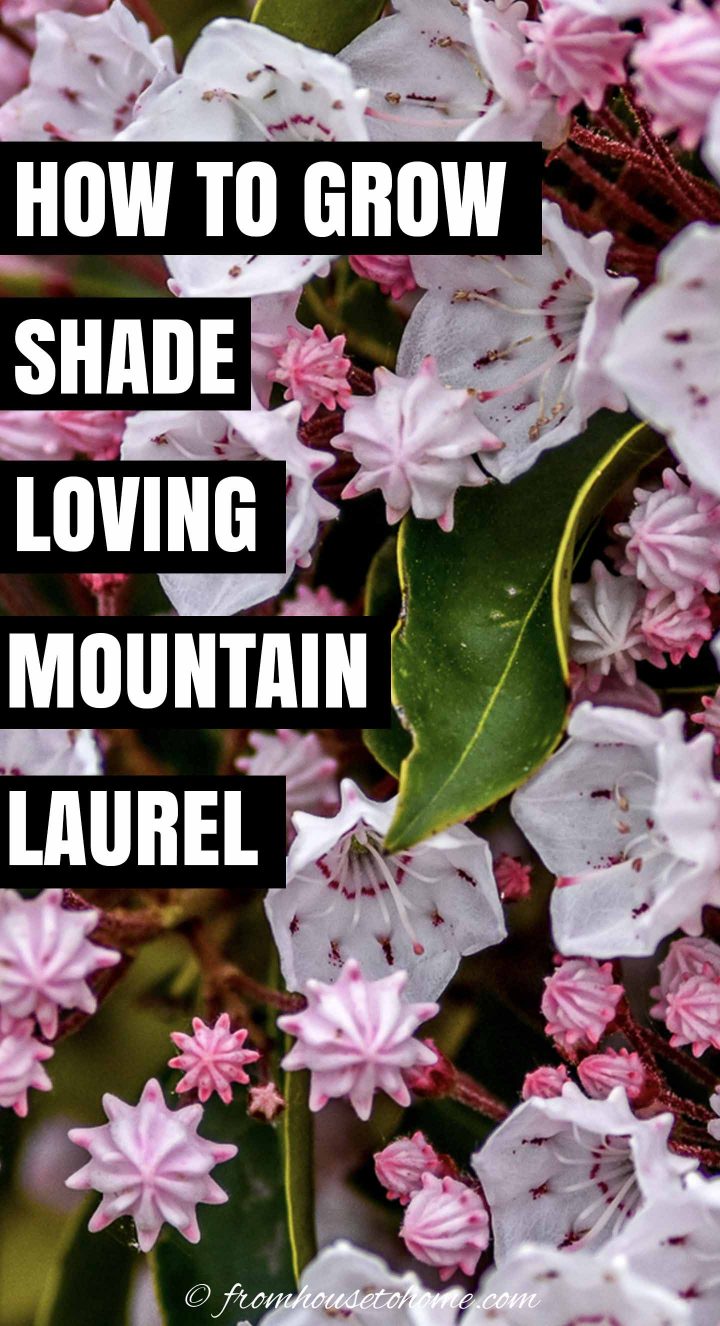
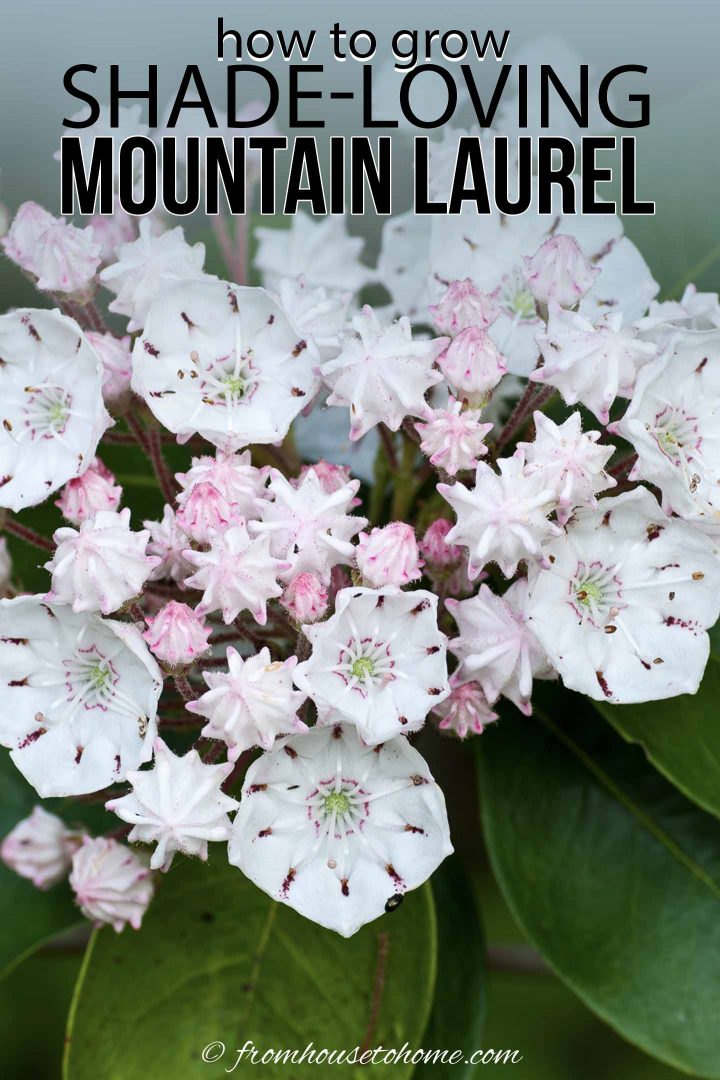
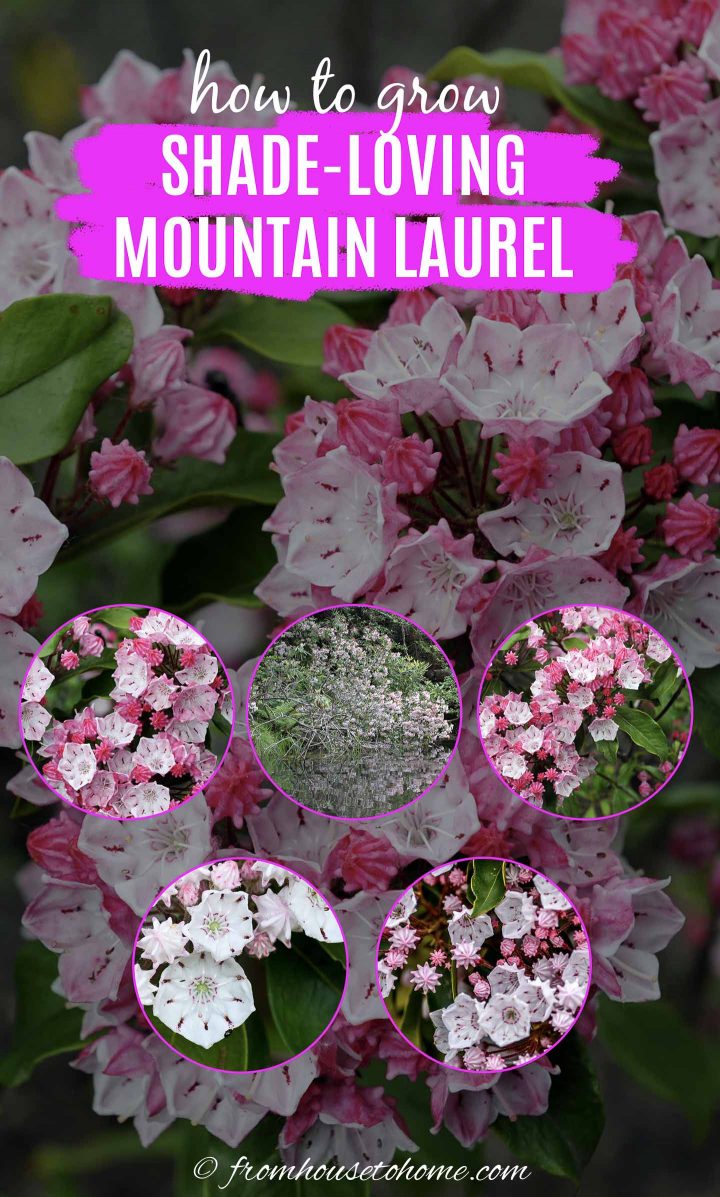
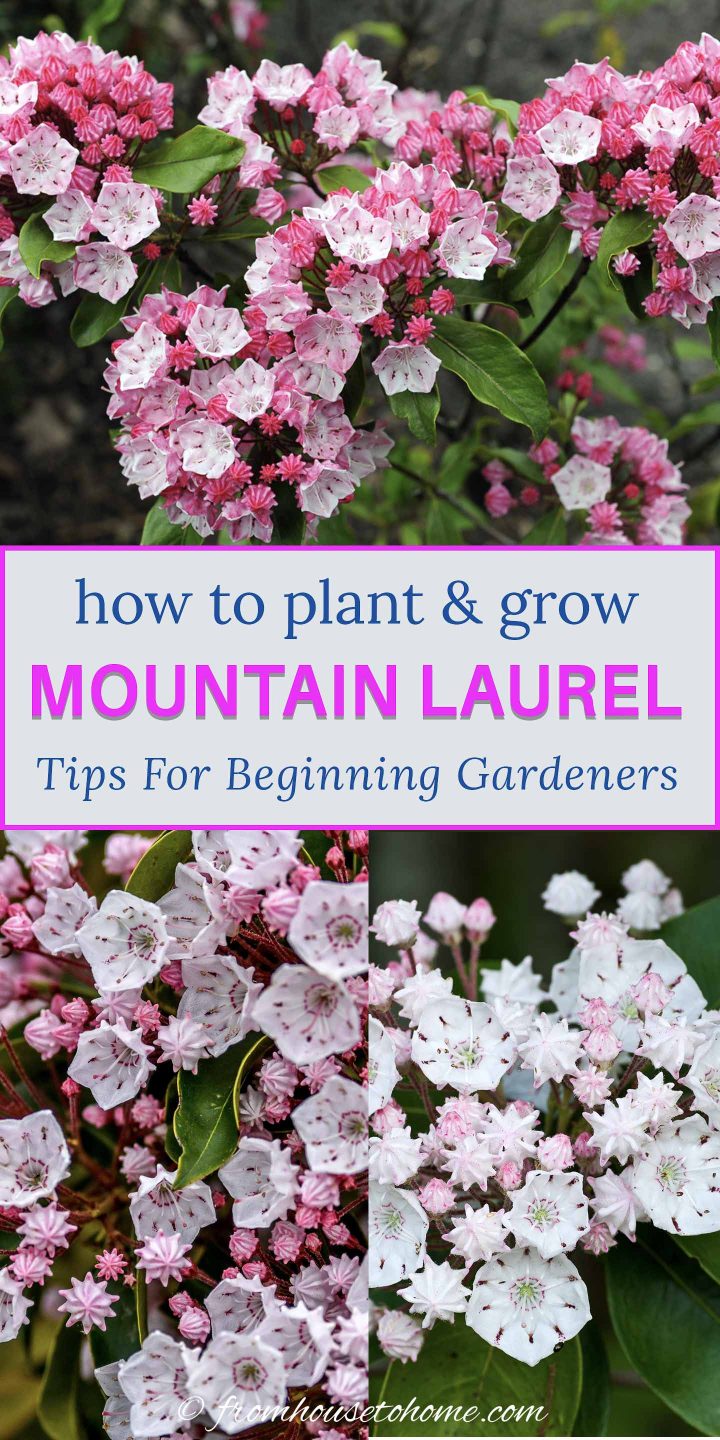

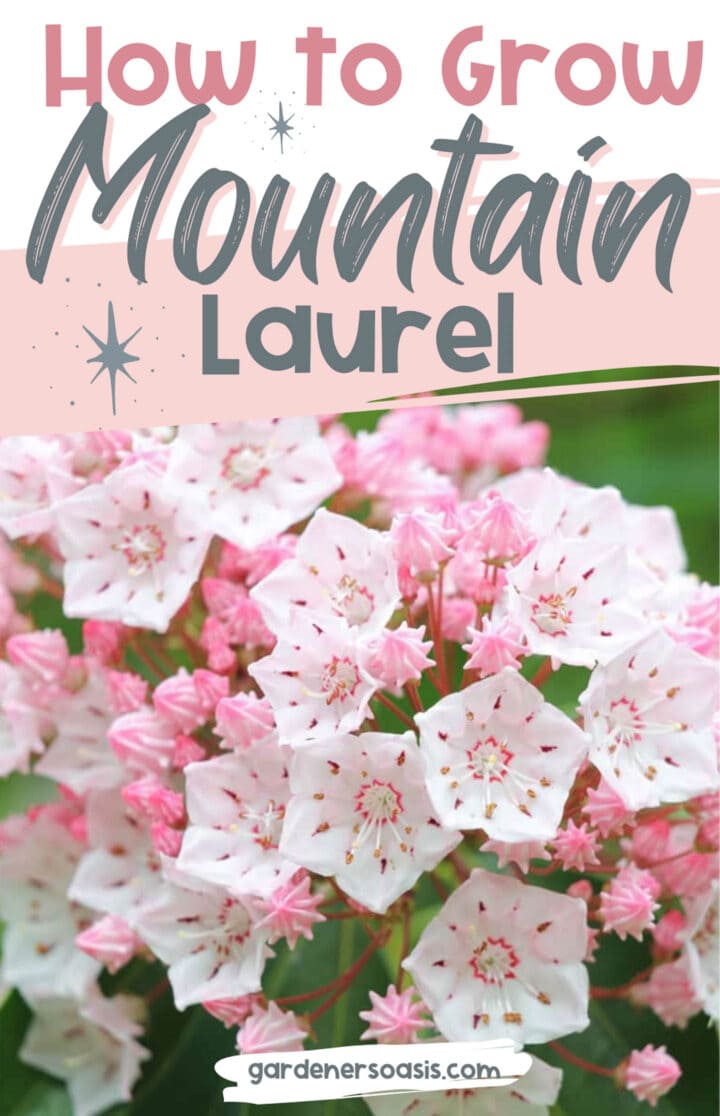

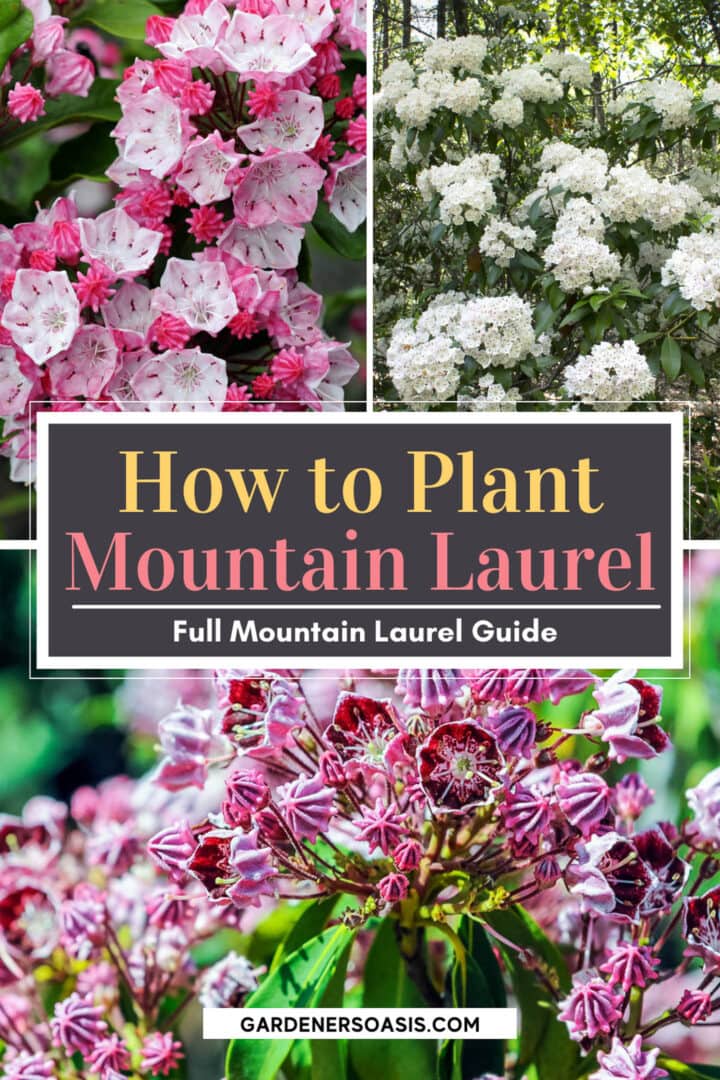
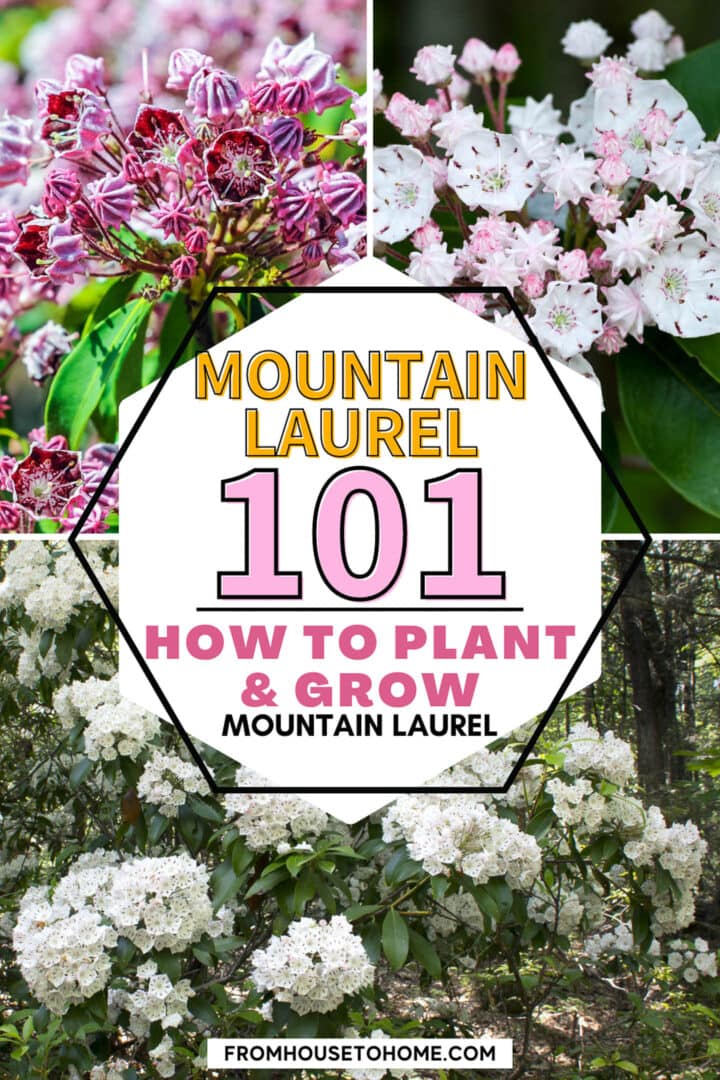
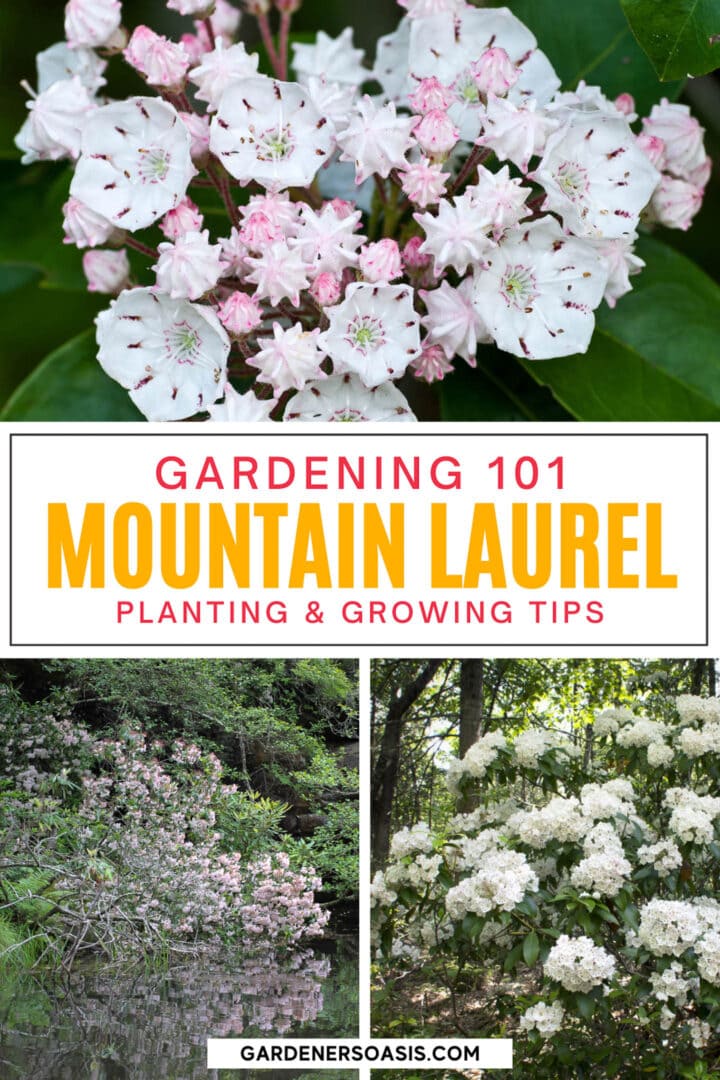
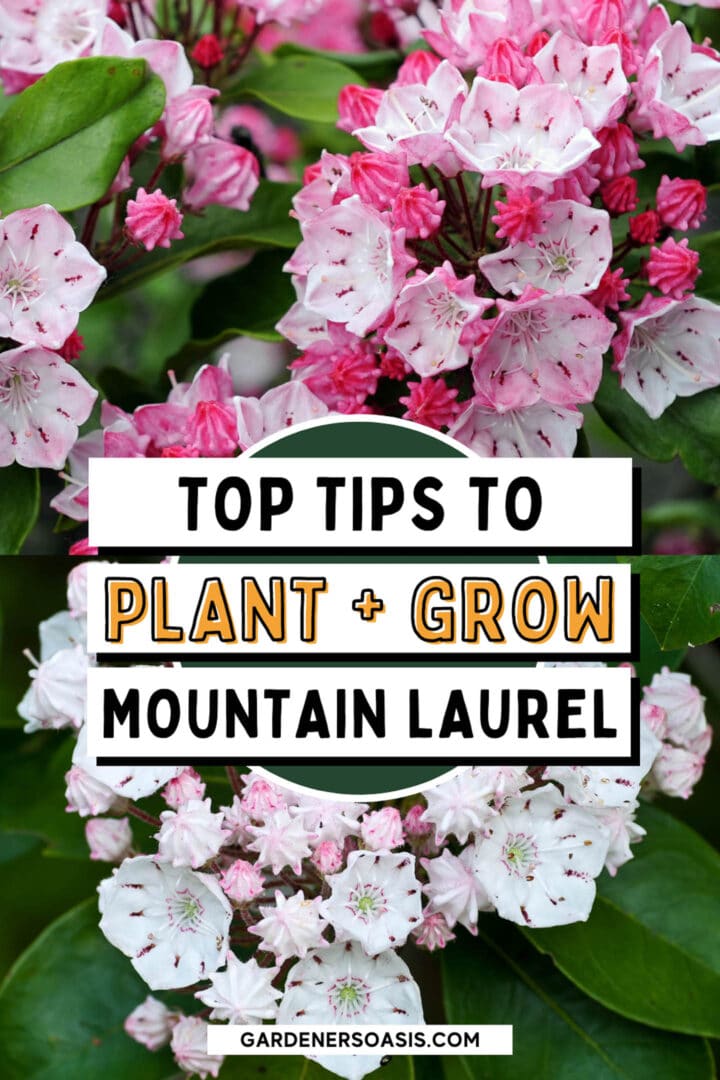

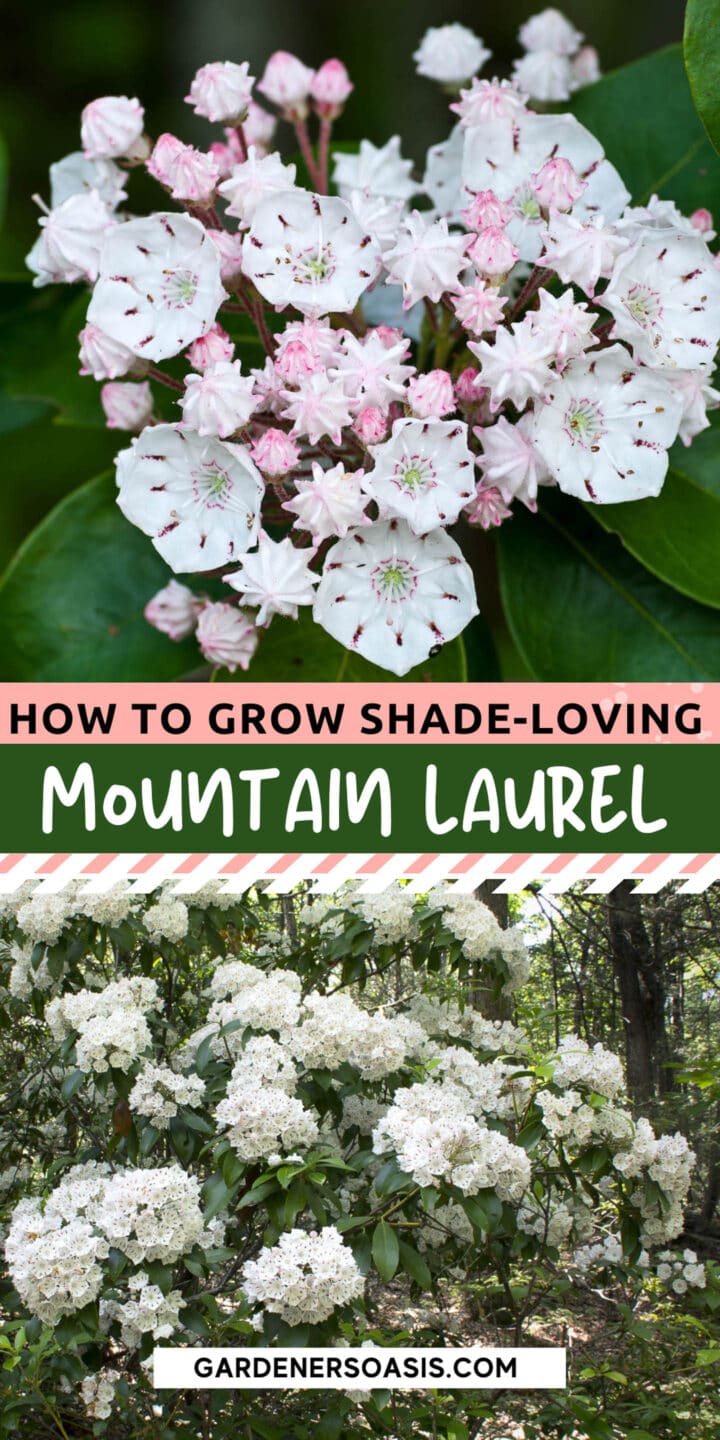
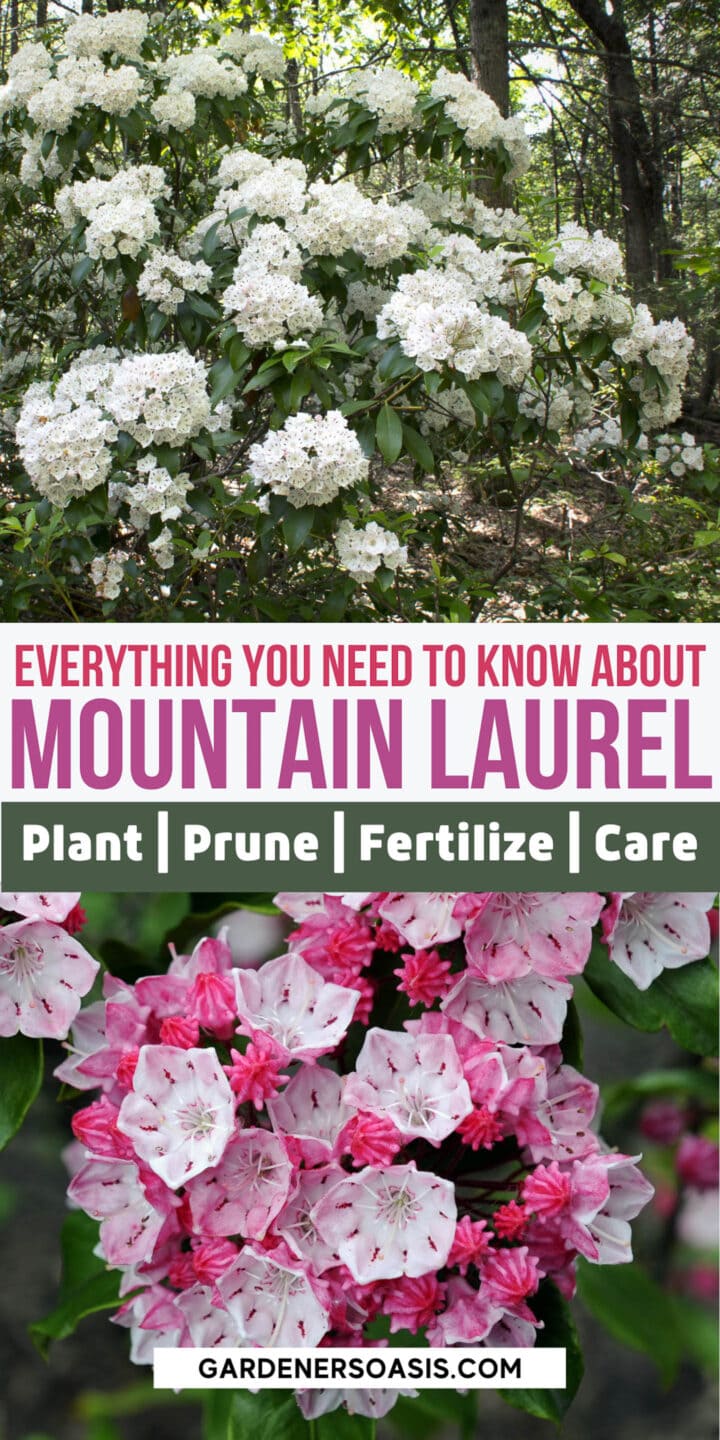
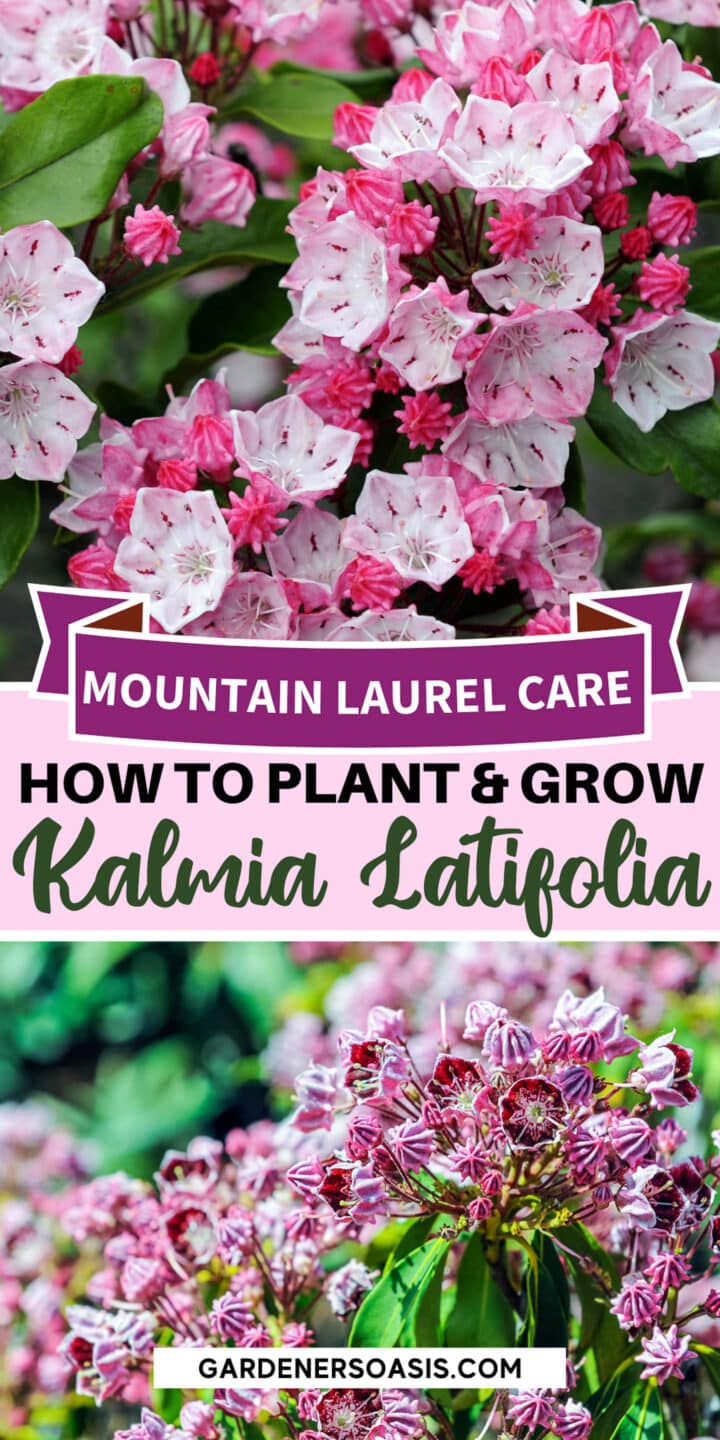
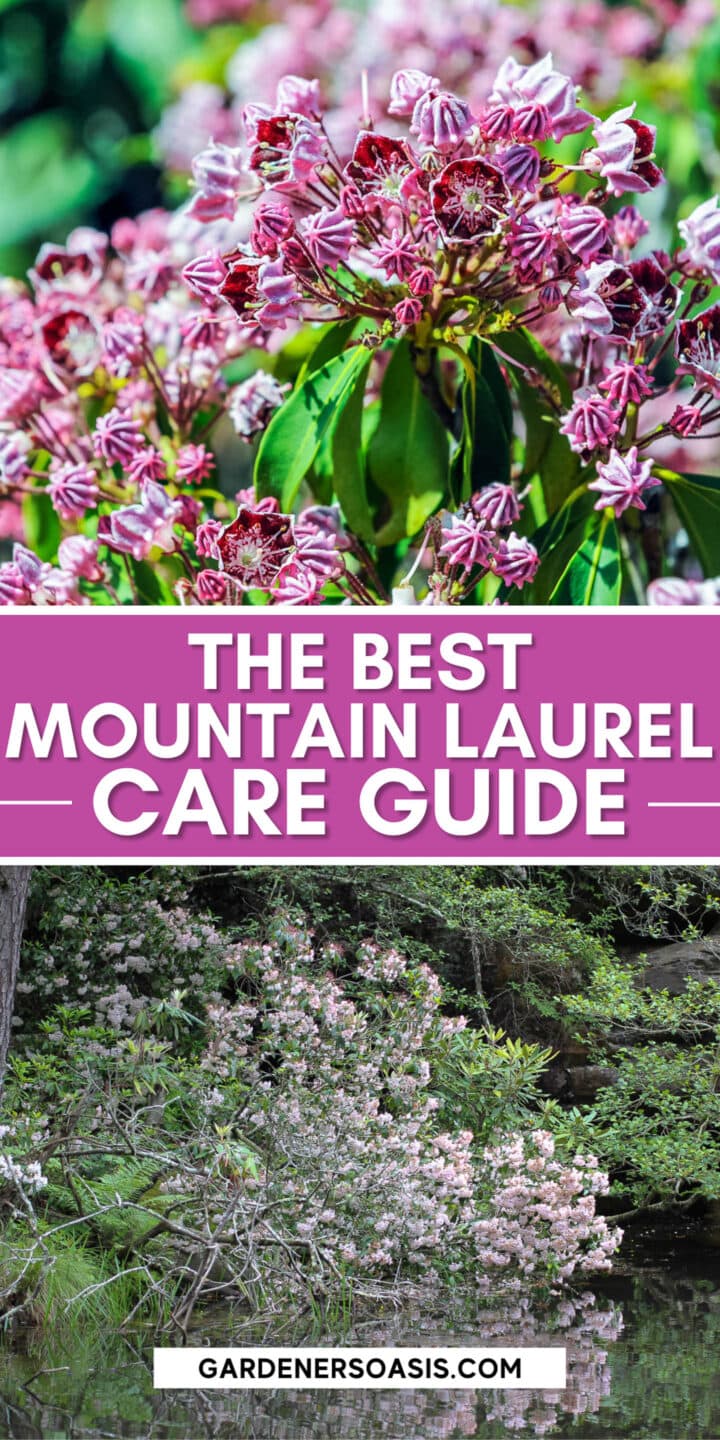
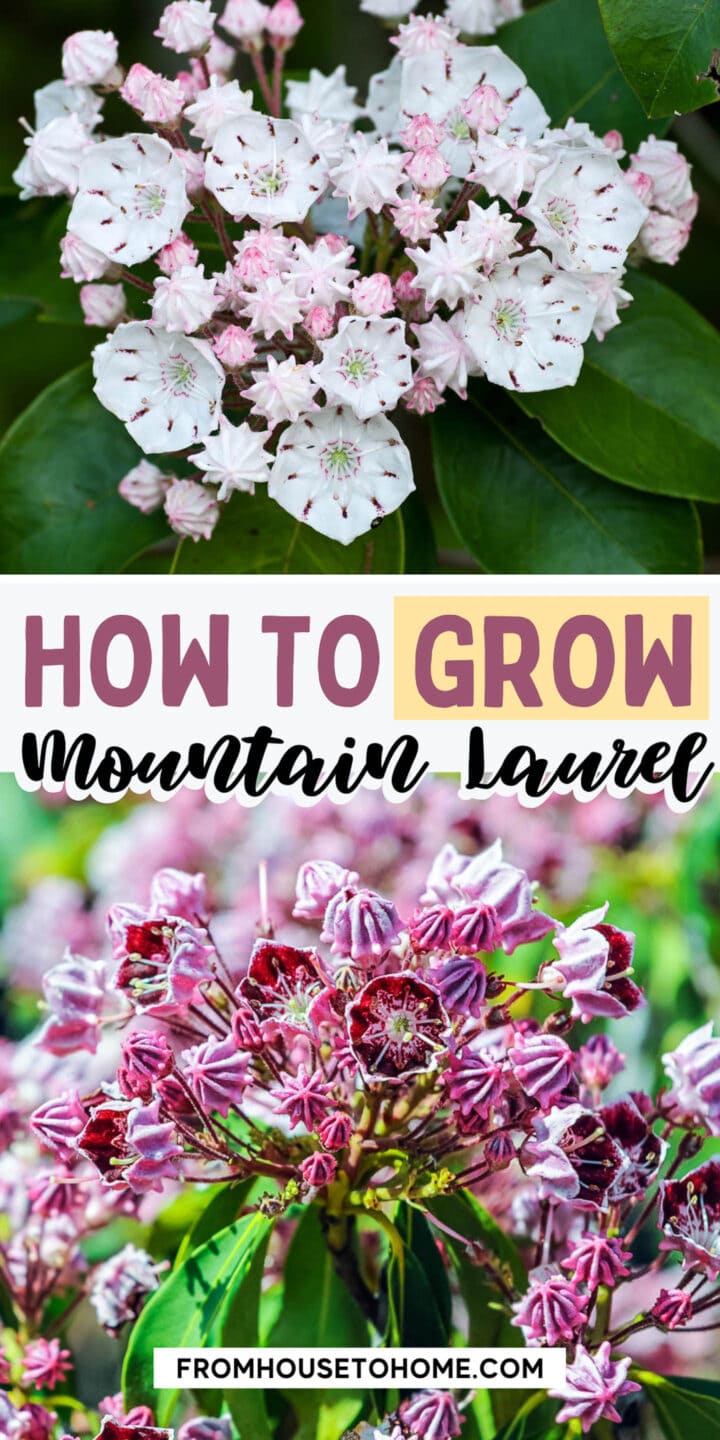

These plants are fanstatic , I love them.
Thanks, Ivory! I think Mountain Laurels are beautiful, too 🙂
The flowers are beautiful. Will they thrive in zone 3?
Hi Sherry…yes, the Mountain Laurel flowers are pretty 🙂 The lowest zone I have heard of people growing them is zone 4, so I think zone 3 is probably pushing it. Maybe if you have a really protected spot?
What’s the coldest it will tolerate?amanda
Hi Amanda…most varieties are hardy to US Zone 4, which is equivalent to -30°F to -20°F or -34°C to -29° C.
Hi there – I just planted 5 Laurel plants, and I have been reading about how toxic they are. I even read an article that the gas from the pruning can poison you if you haul them to the dump in a closed car. I am ready to pull them out, but your article is making me hesitate. Have you really deadheaded them by hand without protection? I did read they are similarly toxic to rhododendrons, and I thought “tons of people have those without problems,” but I am thinking now that these are not popular due to the toxicity? What has your experience been?
Hi Edward…I have pruned them by hand many times with no problems. I wear gloves but no special precautions other than that. I think most of the toxicity comes from ingesting parts of the plants. So as long as you don’t have pets that might chew on the branches or leaves, they should be fine in your garden.
Fortunately for me they are native to my area and we have about 6 beautiful mountain laurels that self -seeded years ago and are gorgeous every spring!
I live in North western SC and was wondering if you are talking about the Laurel tree, and also if they will grow here? I know they do in North Carolina, also if they need complete shade? I love them because they don’t get huge and they are evergreens!
Hi Linda…Mountain Laurel is a different plant than the laurel tree (although the leaves look a little similar). I live in north western SC also (Greenville) and Mountain Laurel does well here. They will grow in part sun or shade, but will have a tough time in full sun (it’s a little too hot for them). They are really pretty plants.
Funny enough my entire property is surrounded by native mountain laurel here in southern NH. As they’re native they require little to no maintenance, and on the edge of the forest (where they receive the most sun) they produce gorgeous clusters of white blooms. Mixed in with the laurels are a few blueberry bushes of some tall native variety that have white blooms earlier in the spring- so I have quite a few chances to hold parties in the spring! Only current issue I have is the ever encroaching nature of the forest we live in. In the past 16 years since the house was built, the trees have been growing in quite close and quite large near the house due to a lack of planning (thanks mom and dad) and I’ve been having trouble keeping up with the amount of yard work in fall. Ideally (though I hate removing native plants) the trees would be pushed back 15 feet further on all sides from where they’re currently at- but with 100ft pines and maples and oaks with large branch systems, things would get incredibly expensive. Seeing as you live with trees, do you have any advice on how I might reduce the amount of work created in autumn by these trees dropping everything in Autumn? Currently I only have access to a traditional rake and tarp setup- but it is very time and energy consuming, and often I never finish the whole yard just by how absolutely dense and thick the leaf twig and needle cover is. The laurels love it for their root systems, and even thrive because of it in a swampy clay-bottomed area. Anything in the yard however can’t break through anything that I don’t get to rake, and so I’m left with quite an unappealing front yard. Any advice on this situation would be fantastic if you have it. I only have two more years before heading off to college (and hopefully Scotland) and my Father will move out then too to downsize, but he’s gonna need some curb appeal to sell a place with this much mortgage.
Thank you very much!
Hi Anton…Your yard sounds like it is very pretty in the spring, but a lot of work in the fall! For my yard, I use a leaf blower to blow the top layers of leaves back into the wooded area and then rake up what is remaining. Not sure if that is an option for you? Or if you have a lawn mower with a bag attachment you can clear a lot of leaves by mowing over them (although you’ll need to empty the bag frequently). Otherwise, your rake and tarp solution is the best one that I know of.
I live in zone 6 and have terribly rocky and sandy soil. Can mountain laurel be grown in a large pot?
Hi Laura…I haven’t tried so I can’t say for sure. The roots might get a little warm in the summer…but I think it would be worth a shot 🙂
I live in Indiana, 6b. Was wondering if a mountain laurel would work in a protected area that is mainly shade near the entrance of my home. Would it be an easier choice than a rhododendron all the way around?
Hi Janice…Mountain Laurels should be fine in zone 6b, and they do well in the shade so it sounds like you have a good location for it. They are a pretty close relative to Rhododendrons so they’re not really easier (or harder) to grow, but they do have really pretty flowers and are something a little different than what everyone else has.
I have 3 but they have been completely defoliated by deer (I assume). This happens every year. Should I prune them now or leave them alone?
Hi Teri…I’m sorry the deer have taken such a liking to them. Yes, now is a good time to prune Mountain Laurel before they start setting buds for next year.
We just had some laurels planted 2 weeks ago in Memphis, TN. Two of the bushes have leaves with tiny hole do you know what this means.?
Hi Angela…if they are Mountain Laurels, then I suspect it is some kind of insect making the holes. If they are Skip Laurels, then Shot Hole disease is probably the issue. It’s a bacterial infection that causes holes in the leaves. It isn’t fatal to the plant, but if you want to get rid of the holes you can treat it with a fungicide/bactericide containing fixed copper.
I just planted one of these today and wish I had found your article before doing so. I think I may have planted the crown more flush with the ground rather than mounded – should I dig it up and fix it so the crown is mounded more or should I be ok?
Hi Susan…if it’s planted in good soil in a well drained area, it should be okay. If you have heavy soil (like clay) which retains water, then you might want to re-plant it. It’s easier to do that now than to try to dig it up later 🙂